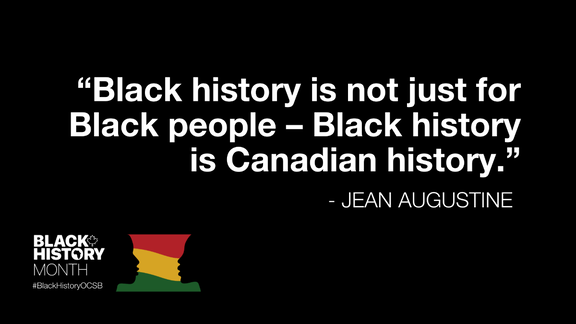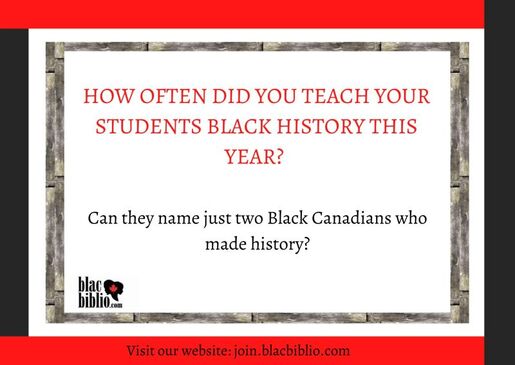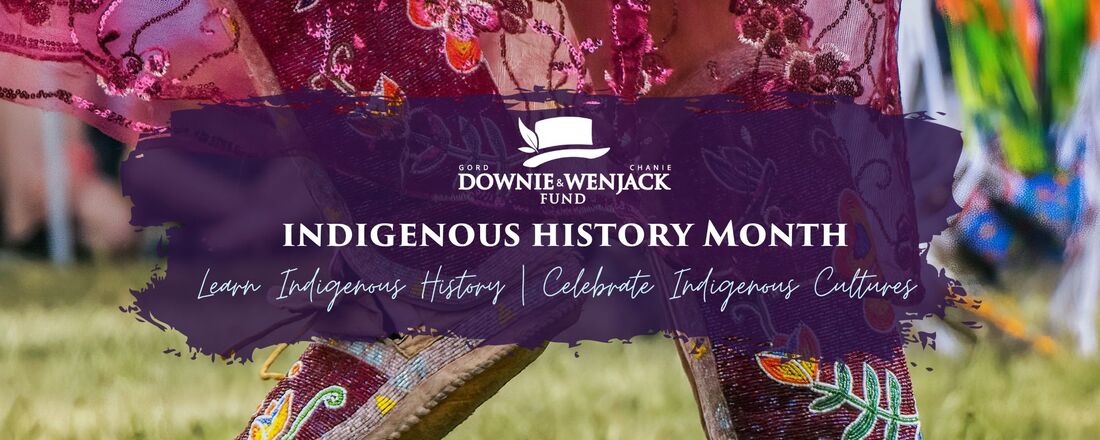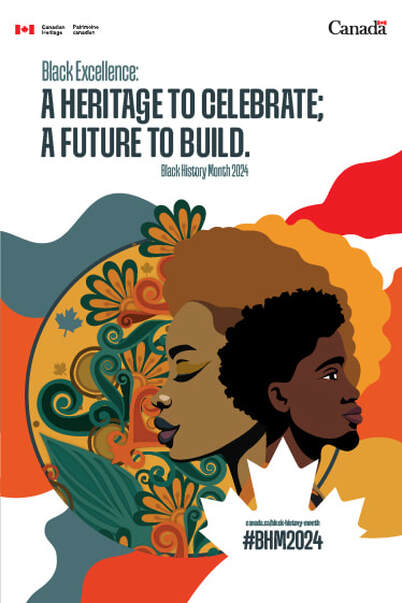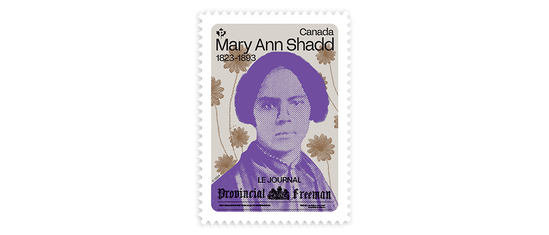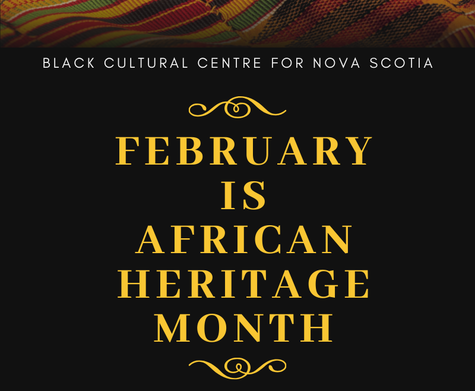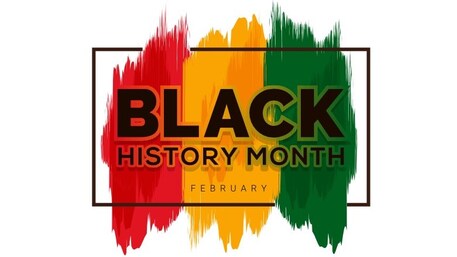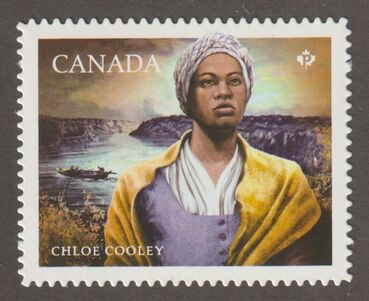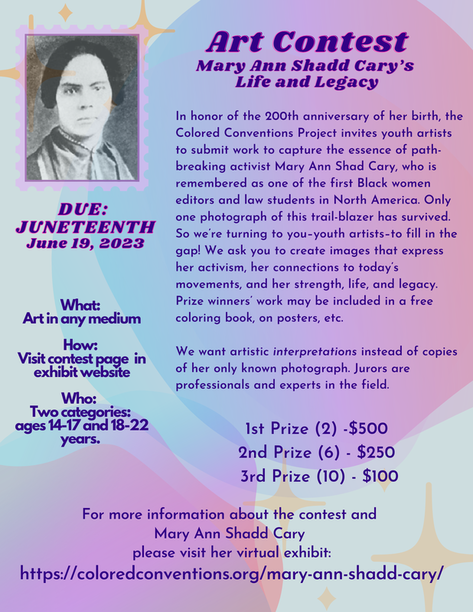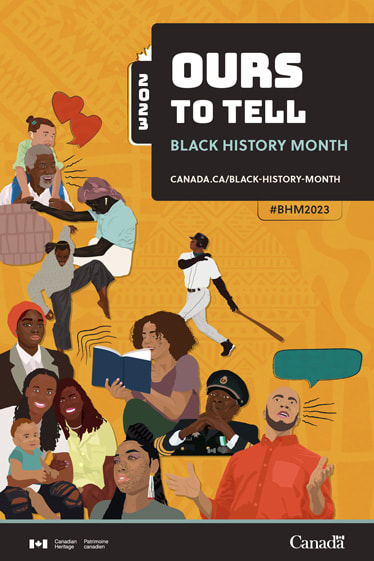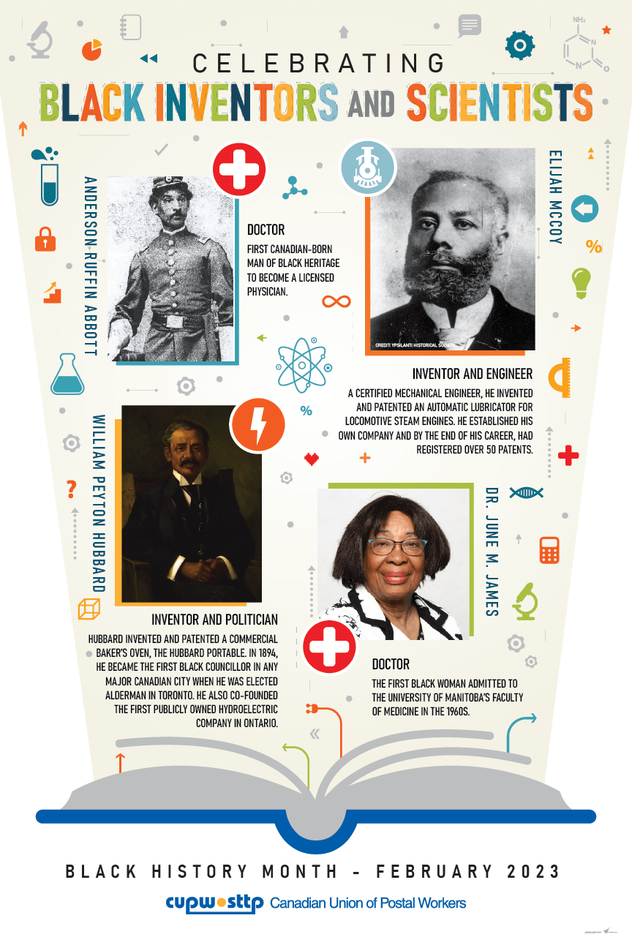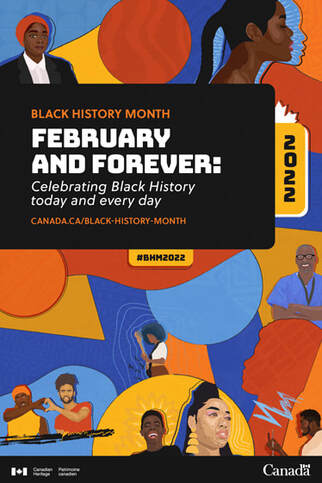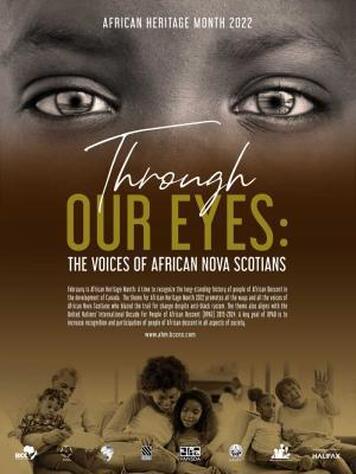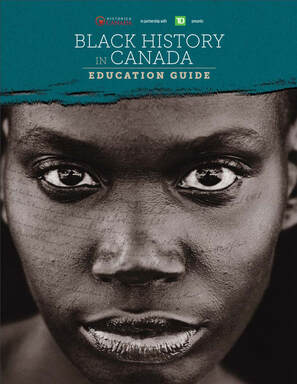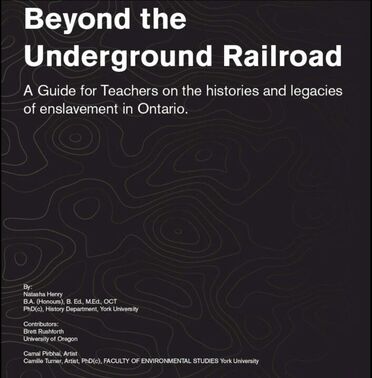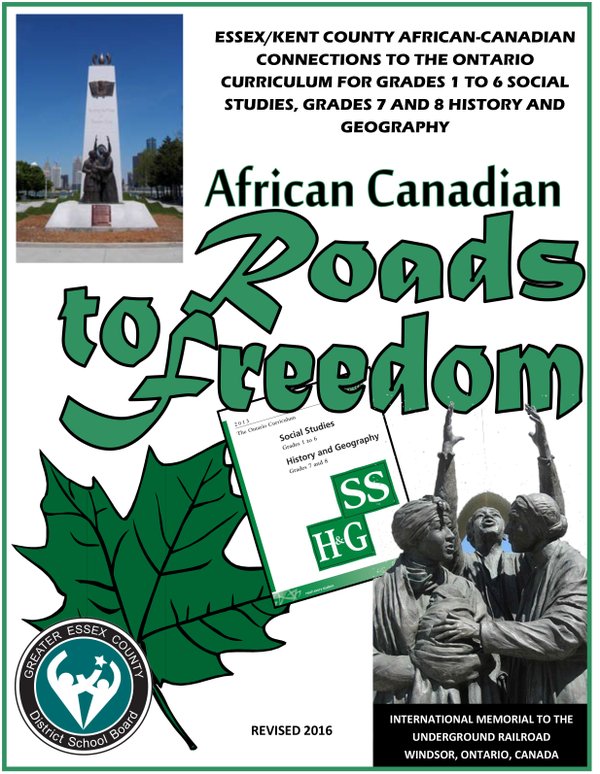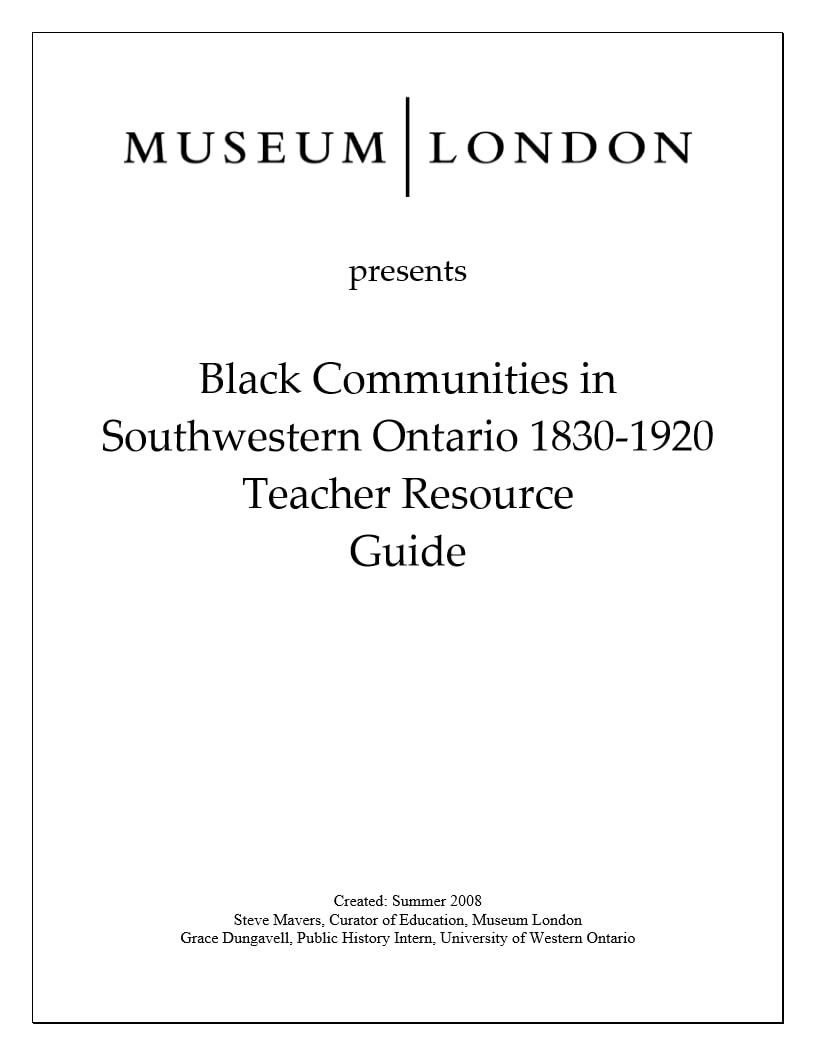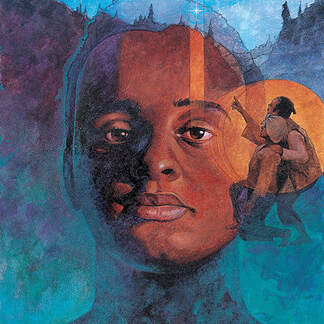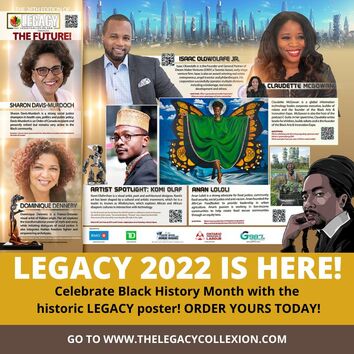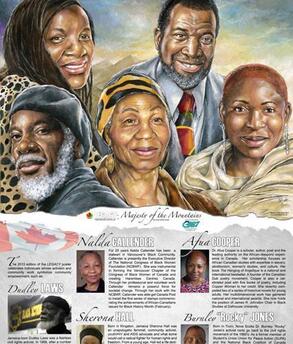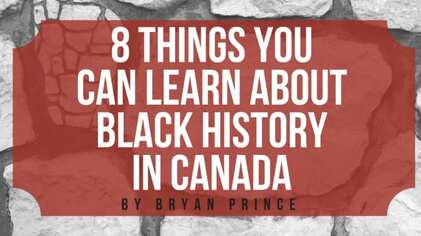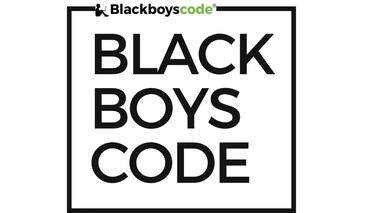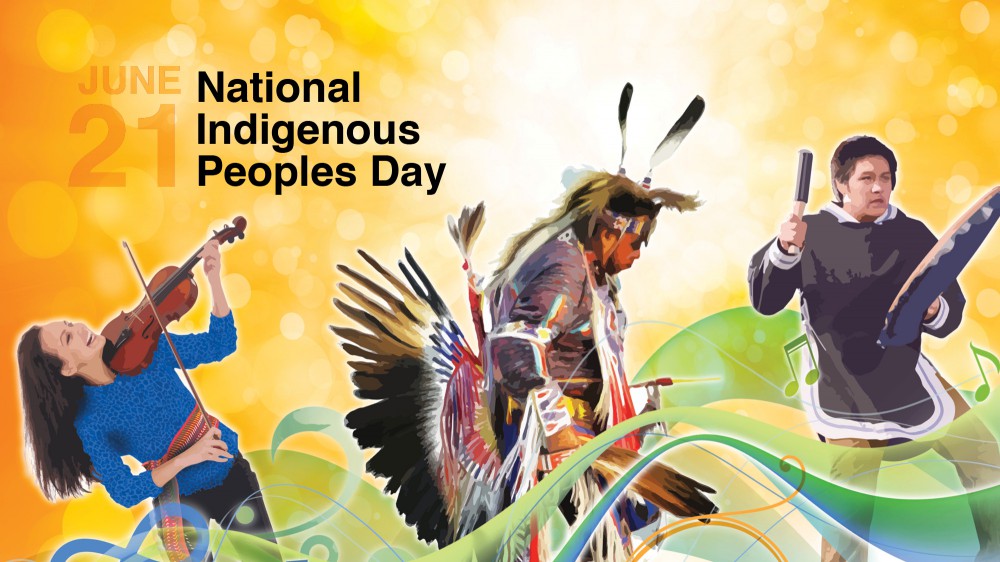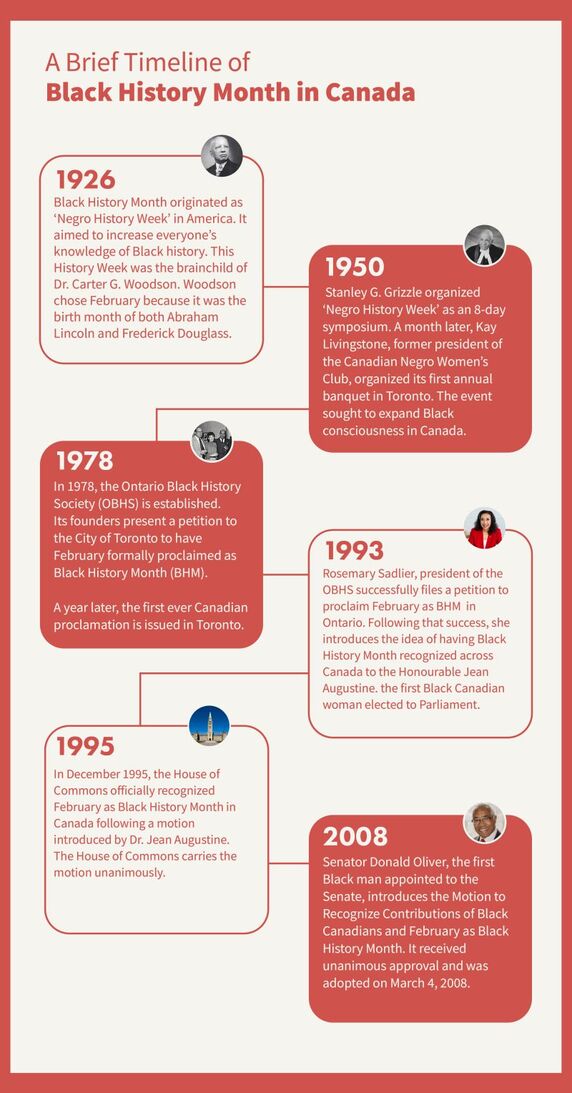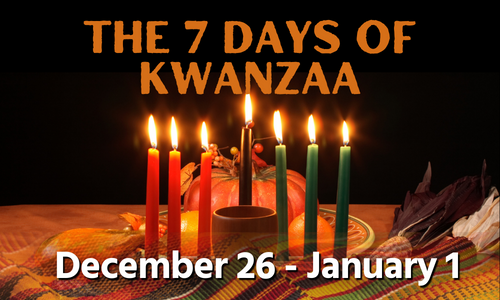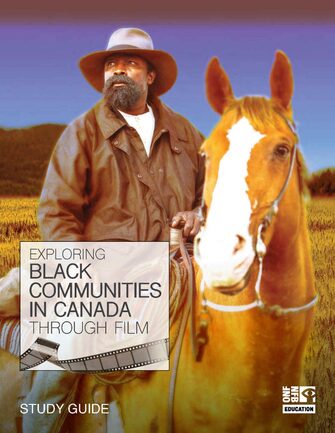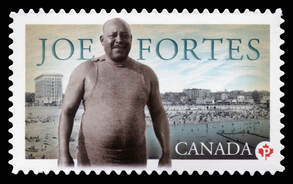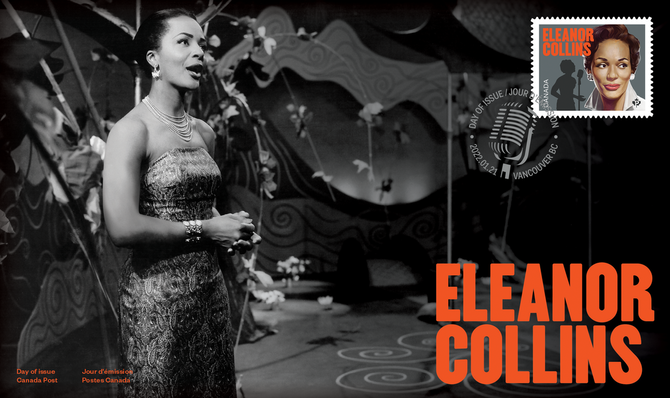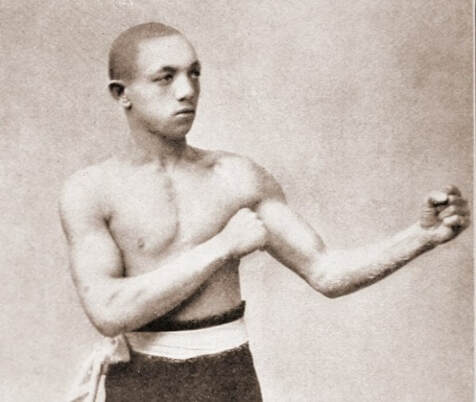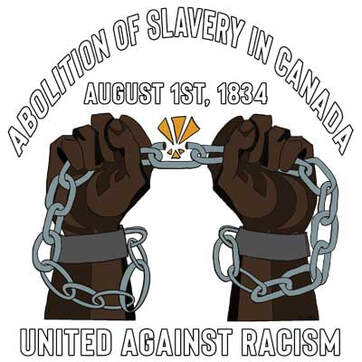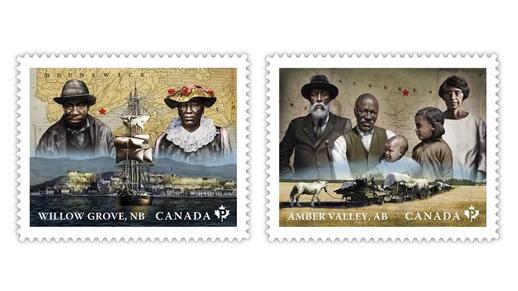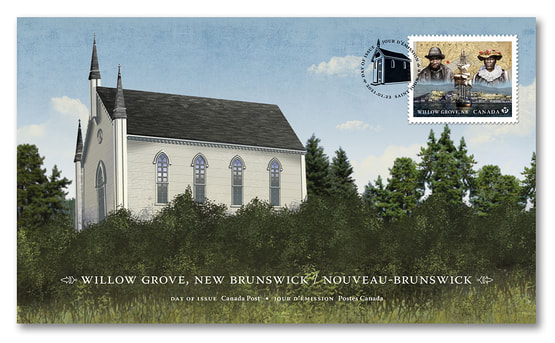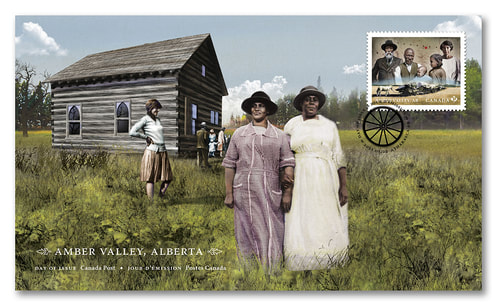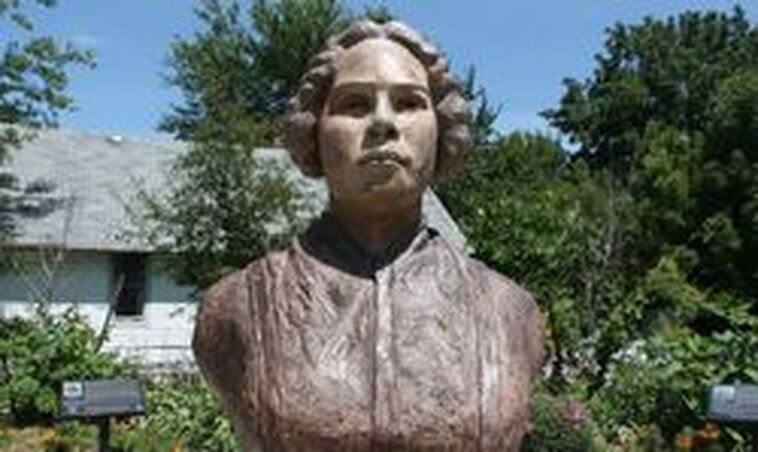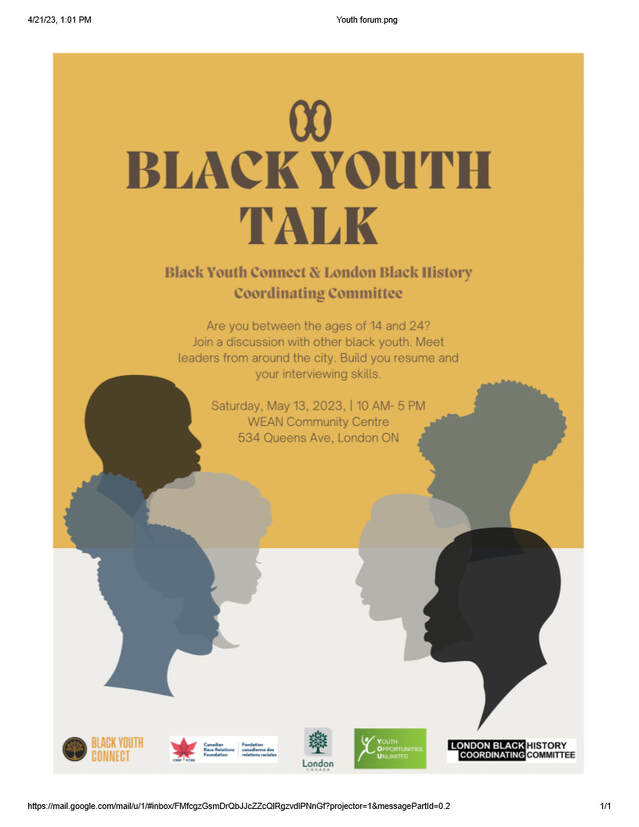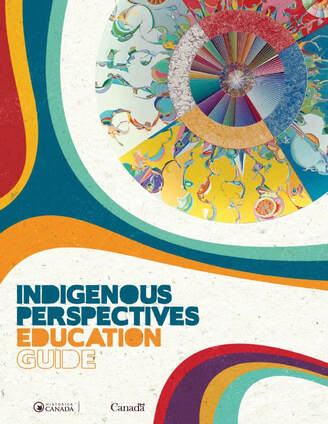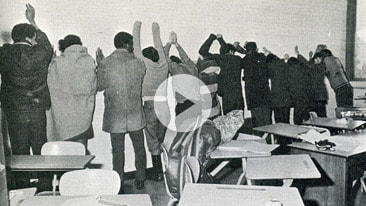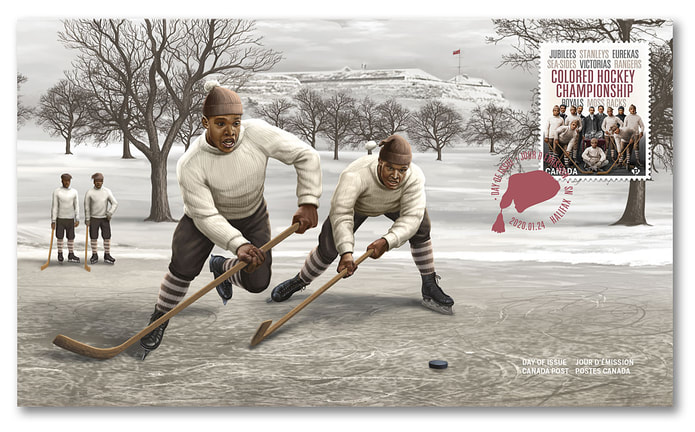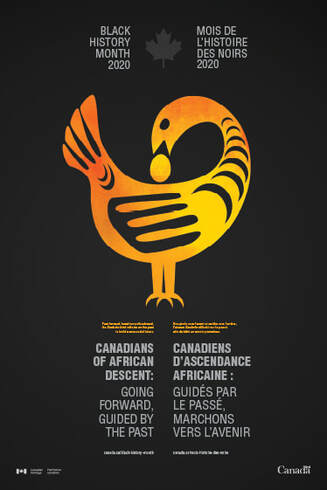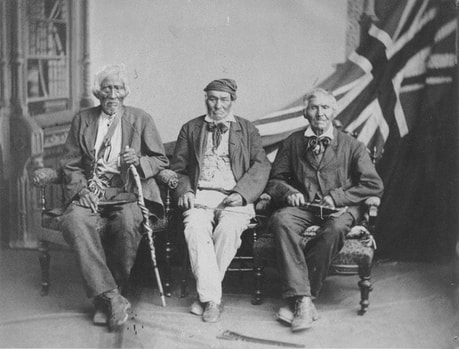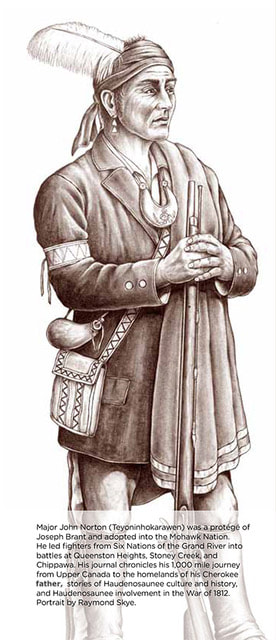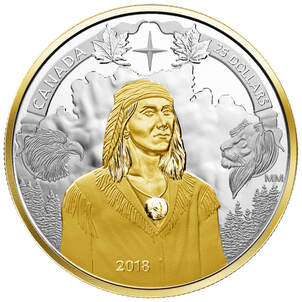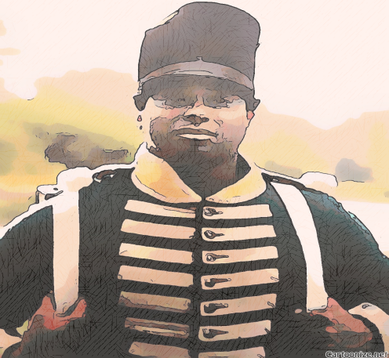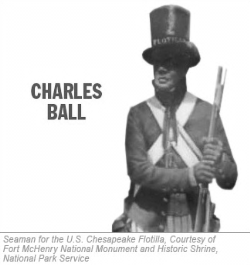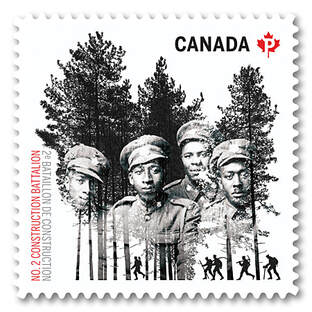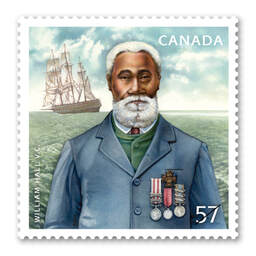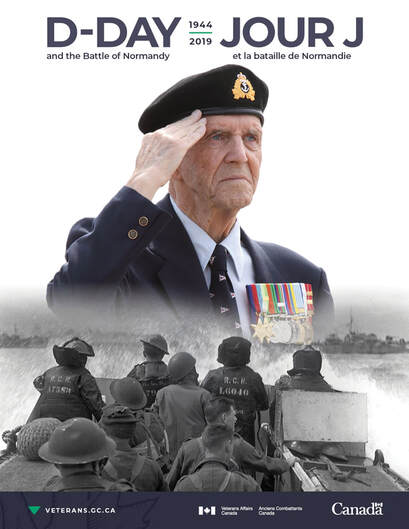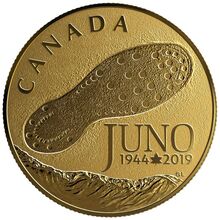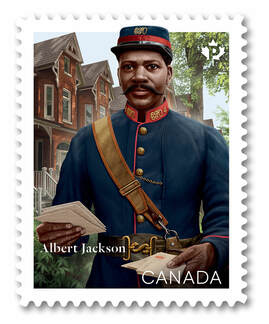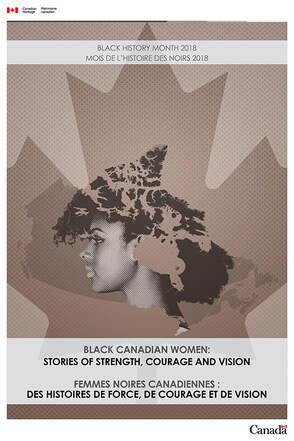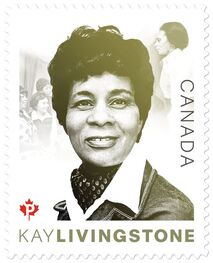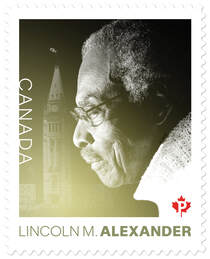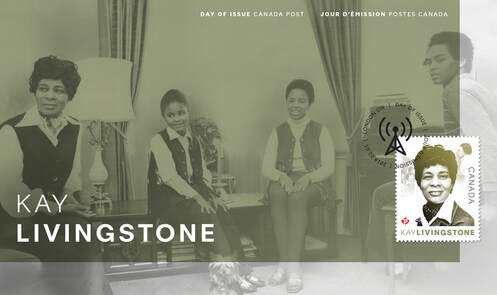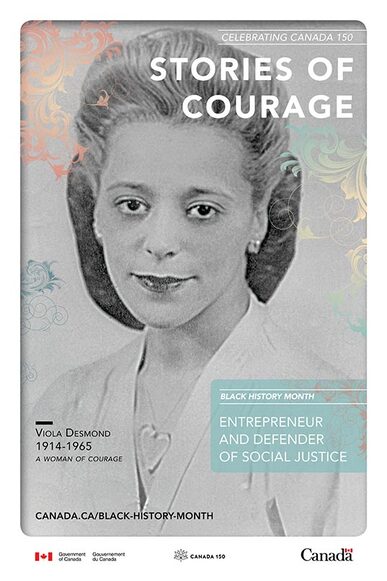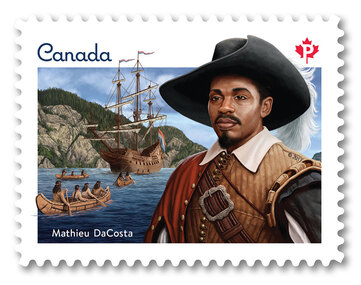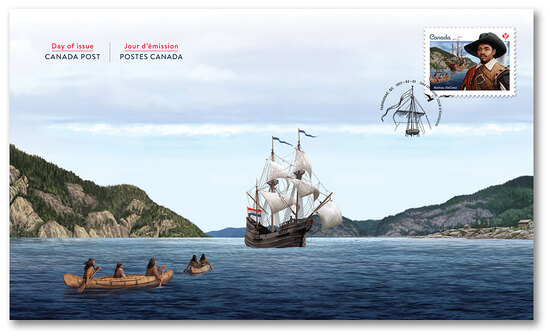Whenever I have my display Almost Forgotten: Black History in Oxford County, teachers usually ask where to go get more information for their classroom. As a result, I have this page to help. The main source is a website from Natasha Henry who is an educator, historian and author who specializes in developing learning materials on African Canadian history. I hope to have other resources for teachers on other subjects and topics as well.
"Black History Month has been recognized in Canada since 1978 and has become widely accepted. Yet the teaching of this subject has often only remained in February without connection to the rest of the school year or the lives of the students. In Beyond Black History Month: Teaching the African Canadian Experience Throughout the Year, the presenters will demonstrate how African Canadian history can be integrated across the curriculum in an authentic, meaningful way. This informative and interactive course offers practical classroom strategies to help effectively integrate more African Canadian experiences through the use of primary sources, online tools, the arts, research and a range of other supplementary materials such as books and media. Educators will gain valuable content knowledge on Black Canadian history and learn inquiry-based approaches to apply principles of culturally-relevant pedagogy, anti-racist education, equity, inclusion and anti-oppressive frameworks in teaching African Canadian history. Teachers will leave this course feeling more informed, with self-designed three-part lessons that they can take back to their classrooms.” Natasha Henry B.A. (Honours), B. Ed., M.Ed. (candidate)
Fundi Education Black History Workshops - by Natasha Henry
"Fundi Education offers student-focused presentations and teacher training sessions to incorporate Black history into the classroom.
Student-Focused
A variety of education programs designed to enrich the learning experiences of students through informative and interactive workshops. Students will uncover Black history through an array of engaging activities. All workshops compliment the Ontario Social Studies, Geography, and History curriculum (2013).
Life of African-Canadian Pioneers In Ontario (Grade 3 - Communities in Canada, 1780 - 1850). Imagine traveling to a new country by foot or by boat for days, even weeks. When you get there, you encounter the difficulties of building a life for you and your family similar to thousands of other immigrants, but you face even greater hardships because of your race. Students will learn about the experiences of early African Canadian settlers, what obstacles Black pioneers faced, how they overcame them, and how Blacks contributed to developing the country of Canada.
African-Canadians in New France and British North America (Grade 7 - New France and British North America, 1713 - 1800; Canada, 1800 - 1850: Conflict and Challenges).
Blacks have played important roles in the early development of what is now Canada. They were interpreters, slaves, farmers, builders, soldiers, and educators. Students will learn about the longevity of Black settlements in New France and British North America, their contributions and experiences.
Blacks in Early Canada (Grade 8 - Creating Canada, 1850 - 1890; Canada, 1890 - 1914: A Changing Society). Canada’s Black population increased dramatically in the 1850’s when American slavery laws forced escaping slaves to flee further north for safety. Students will examine the experiences of fugitive American slaves and free Blacks as they settled across the Canadian landscape during the mid-1800’s to 1920’s.
Black Inventors (General). This workshop will create a greater awareness of the many things we use in our everyday lives that were invented by Black men and women.
The Black Experience in 20th Century Canada (Grade 10 History). The 20th century was a time of great change and social unrest - the Industrial Revolution, World Wars One and Two, and the challenging of individual rights - learn how many Blacks were affected by and contributed to these changes.
Magnificent Mali: A Medieval African Society (Grade 4 - Early Societies, 3000 BCE - 1500 BCE). The Mali Empire, once one of the wealthiest empires on earth and the second most far-reaching kingdom in West Africa, thrived during the Medieval period. Students will explore aspects of Mali’s society ranging from trade, rulers, geography, and daily life through a variety of interactive exercises.
Celebrating Freedom in Canada: Understanding Emancipation Day Celebrations (Grade 2: Traditions and Celebrations/ Grade 3: Early Settlement in Upper Canada/ Grade 7: British North America; Conflict and Change/ Grade 8: Development of Western Canada; Canada: A Changing Society/ Grade 10 History). In the 19th century, Emancipation Day was the premiere social event for African Canadians from all walks of life. Every August First since 1834, African Canadians have celebrated freedom from slavery throughout British colonies, including Canada. Based on the research for my two books, Talking About Freedom: Celebrating Emancipation Day in Canada (2012) and Emancipation Day: Celebrating Freedom in Canada (2010), students will learn about the origins and features of Emancipation Day commemorations, develop an understanding of how it has evolved over time, and how Emancipation Day celebrations have impacted local communities in Ontario and across Canada.
Booking Programs Program Length: 1 ½ - 2 hours
Program Cost: contact Natasha Henry for details.
For more information or to book programs contact Natasha Henry.
Student-Focused
A variety of education programs designed to enrich the learning experiences of students through informative and interactive workshops. Students will uncover Black history through an array of engaging activities. All workshops compliment the Ontario Social Studies, Geography, and History curriculum (2013).
Life of African-Canadian Pioneers In Ontario (Grade 3 - Communities in Canada, 1780 - 1850). Imagine traveling to a new country by foot or by boat for days, even weeks. When you get there, you encounter the difficulties of building a life for you and your family similar to thousands of other immigrants, but you face even greater hardships because of your race. Students will learn about the experiences of early African Canadian settlers, what obstacles Black pioneers faced, how they overcame them, and how Blacks contributed to developing the country of Canada.
African-Canadians in New France and British North America (Grade 7 - New France and British North America, 1713 - 1800; Canada, 1800 - 1850: Conflict and Challenges).
Blacks have played important roles in the early development of what is now Canada. They were interpreters, slaves, farmers, builders, soldiers, and educators. Students will learn about the longevity of Black settlements in New France and British North America, their contributions and experiences.
Blacks in Early Canada (Grade 8 - Creating Canada, 1850 - 1890; Canada, 1890 - 1914: A Changing Society). Canada’s Black population increased dramatically in the 1850’s when American slavery laws forced escaping slaves to flee further north for safety. Students will examine the experiences of fugitive American slaves and free Blacks as they settled across the Canadian landscape during the mid-1800’s to 1920’s.
Black Inventors (General). This workshop will create a greater awareness of the many things we use in our everyday lives that were invented by Black men and women.
The Black Experience in 20th Century Canada (Grade 10 History). The 20th century was a time of great change and social unrest - the Industrial Revolution, World Wars One and Two, and the challenging of individual rights - learn how many Blacks were affected by and contributed to these changes.
Magnificent Mali: A Medieval African Society (Grade 4 - Early Societies, 3000 BCE - 1500 BCE). The Mali Empire, once one of the wealthiest empires on earth and the second most far-reaching kingdom in West Africa, thrived during the Medieval period. Students will explore aspects of Mali’s society ranging from trade, rulers, geography, and daily life through a variety of interactive exercises.
Celebrating Freedom in Canada: Understanding Emancipation Day Celebrations (Grade 2: Traditions and Celebrations/ Grade 3: Early Settlement in Upper Canada/ Grade 7: British North America; Conflict and Change/ Grade 8: Development of Western Canada; Canada: A Changing Society/ Grade 10 History). In the 19th century, Emancipation Day was the premiere social event for African Canadians from all walks of life. Every August First since 1834, African Canadians have celebrated freedom from slavery throughout British colonies, including Canada. Based on the research for my two books, Talking About Freedom: Celebrating Emancipation Day in Canada (2012) and Emancipation Day: Celebrating Freedom in Canada (2010), students will learn about the origins and features of Emancipation Day commemorations, develop an understanding of how it has evolved over time, and how Emancipation Day celebrations have impacted local communities in Ontario and across Canada.
Booking Programs Program Length: 1 ½ - 2 hours
Program Cost: contact Natasha Henry for details.
For more information or to book programs contact Natasha Henry.
Professional Development for Teachers
"Educators will gain valuable content knowledge and learn inquiry-based approaches to teaching Black history across the Ontario curriculum. These workshops will support teachers in enhancing their knowledge and application of the six historical thinking concepts and embedding the principles of inclusion, diversity, and equity and into their teaching practice through the inclusion of the African Canadian experience. These training sessions will demonstrate how Black Canadian history doesn't have to be a stand-alone unit or a focus only during Black History Month. Participants will leave each workshop with the knowledge, skills, and tools to bring intriguing stories of African Canadians to life. Specifically tailored to suit your needs.
Interested in bringing these workshops to your class, school or school board? Contact Natasha Henry."
Interested in bringing these workshops to your class, school or school board? Contact Natasha Henry."
Black. Canadians. Connecting the Dots
Connecting the Dots aims to share common experiences among members of the African diaspora across Canada.
Our Mission
"Our mission is to educate citizens interested in learning more about the African diaspora in Canada while equipping Canadians to learn about and apply best practices in combating Anti-Black racism.
Ultimately the success of this initiative will be measured by the successful delivery of the summit, the application of toolkits in new regions, and a strengthened network between organizations and leaders seeking to support and understand the African diaspora in Canada.
Ultimately the success of this initiative will be measured by the successful delivery of the summit, the application of toolkits in new regions, and a strengthened network between organizations and leaders seeking to support and understand the African diaspora in Canada.
Phase 1
Phase 1 of Connecting The Dots is a research and current state of affairs information sharing stage. This phase will also include an open call for submissions for community success stories, existing research and reports which will be vetted and included for display on this website.
Phase 2
The toolkit development stage. The team will compile toolkits containing materials and templates required to replicate the successful initiatives described in the case studies developed in Phase 1. The toolkits will be designed with adaptability in mind. They must be tailored to different communities, self-sustaining, and supported by advisory committees who successfully implemented the initiatives previously.
Phase 3
In the third phase of Connecting The Dots, the project will entail the development and delivery of an online summit accessible to every Canadian with Internet access. The summit will serve as an opportunity to discuss the current state of affairs of the African Diaspora in Canada, share best practices and train attendees in using the toolkits developed in Phase 2.
Phase 4
Phase 4 will serve as a period of action as those who participate in the summit are equipped with the toolkits and supported in testing them within their communities across Canada. The entire project will wrap with a report detailing the research, information gathered through the summit, and activity produced as toolkits are applied to new communities." (From Connecting the Dots website)
Phase 1 of Connecting The Dots is a research and current state of affairs information sharing stage. This phase will also include an open call for submissions for community success stories, existing research and reports which will be vetted and included for display on this website.
Phase 2
The toolkit development stage. The team will compile toolkits containing materials and templates required to replicate the successful initiatives described in the case studies developed in Phase 1. The toolkits will be designed with adaptability in mind. They must be tailored to different communities, self-sustaining, and supported by advisory committees who successfully implemented the initiatives previously.
Phase 3
In the third phase of Connecting The Dots, the project will entail the development and delivery of an online summit accessible to every Canadian with Internet access. The summit will serve as an opportunity to discuss the current state of affairs of the African Diaspora in Canada, share best practices and train attendees in using the toolkits developed in Phase 2.
Phase 4
Phase 4 will serve as a period of action as those who participate in the summit are equipped with the toolkits and supported in testing them within their communities across Canada. The entire project will wrap with a report detailing the research, information gathered through the summit, and activity produced as toolkits are applied to new communities." (From Connecting the Dots website)
"Teaching Black history and culture needs to be a mandatory part of the Ontario curriculum, advocates say"
Top National Heritage Months & Celebrations
Heritage Month Month
Back History Month February
Women’s History Month March
Irish Heritage Month March
Greek American Heritage Month March
Arab American Heritage Month April
Asian American & Pacific Islander Heritage Month May
Canadian Jewish Heritage Month May
Polish Heritage Month May
Alzheimer's Month June
LGBTQ+ Pride Month June
Caribbean Heritage Month June
Immigrant Heritage Month June
Bike Month June
Disability Pride Month July
French Heritage Month July
Transgender History Month August
Hispanic Heritage Month September 15
German Heritage Month October
Filipino History Month October
Italian Heritage Month October
Native American Heritage Month November
Back History Month February
Women’s History Month March
Irish Heritage Month March
Greek American Heritage Month March
Arab American Heritage Month April
Asian American & Pacific Islander Heritage Month May
Canadian Jewish Heritage Month May
Polish Heritage Month May
Alzheimer's Month June
LGBTQ+ Pride Month June
Caribbean Heritage Month June
Immigrant Heritage Month June
Bike Month June
Disability Pride Month July
French Heritage Month July
Transgender History Month August
Hispanic Heritage Month September 15
German Heritage Month October
Filipino History Month October
Italian Heritage Month October
Native American Heritage Month November
"DWF invites you to join us in the spirit of connection and reconciliation to Learn Indigenous History | Celebrate Indigenous Cultures.
For First Nations, Inuit, and Métis communities from coast to coast to coast, the warmer weather marks the beginning of cultural celebrations like powwows. Check out DWF’s event calendar where we’ve compiled a list of community-led events to help you join in the celebrations."
Check out these history-related resources:
For First Nations, Inuit, and Métis communities from coast to coast to coast, the warmer weather marks the beginning of cultural celebrations like powwows. Check out DWF’s event calendar where we’ve compiled a list of community-led events to help you join in the celebrations."
Check out these history-related resources:
Black History Month 2024 Theme:
“Black Excellence: A Heritage to Celebrate; a Future to Build,”
"This theme celebrates the rich past and present contributions and accomplishments of Black people in Canada, while aspiring to embrace new opportunities for the future.
The theme aligns with the 10th year of the International Decade for People of African Descent and recognizes that people of African descent represent a distinct group whose human rights must be promoted and protected." (February is Black History Month - Canada.ca)
The theme aligns with the 10th year of the International Decade for People of African Descent and recognizes that people of African descent represent a distinct group whose human rights must be promoted and protected." (February is Black History Month - Canada.ca)
International Decade for People of African Descent 2015-2024
"The UN General Assembly proclaimed 2015-2024 as the International Decade for People of African Descent (resolution 68/237) citing the need to strengthen national, regional and international cooperation in relation to the full enjoyment of economic, social, cultural, civil and political rights by people of African descent, and their full and equal participation in all aspects of society.
As proclaimed by the General Assembly, the theme for the International Decade is “People of African descent: recognition, justice and development.” (Programme of Activities for the Implementation of the International Decade for People of African Descent | United Nations)
As proclaimed by the General Assembly, the theme for the International Decade is “People of African descent: recognition, justice and development.” (Programme of Activities for the Implementation of the International Decade for People of African Descent | United Nations)
Black History Month stamp celebrates the achievements and legacy of Mary Ann Shadd
"As the founder of The Provincial Freeman newspaper, Mary Ann Shadd (1823-93) was the first Black woman to edit and publish a newspaper in North America. The American-born educator and abolitionist moved to Windsor, Canada West (now Ontario), where she established a racially integrated school in 1851, followed by The Provincial Freeman in 1853. We asked Adrienne Shadd, a historian, and her daughter, Marishana Mabusela, both the great-great-great and great-great-great-great-nieces, respectively, of Mary Ann Shadd, about their connection to their famous ancestor. Their answers emphasized how the growing impetus to tell the stories of Black Canadians, particularly Black women whose lives were doubly concealed, can make a difference in a single generation...." (Black History Month stamp celebrates the achievements and legacy of Mary Ann Shadd - Magazine | Canada Post (canadapost-postescanada.ca)
Wear Orange this September
Back to School & Truth and Reconciliation Week
Mon. Sept. 25 - Mon. Oct. 2, 2023
The National Day for Truth and Reconciliation, originally known and still colloquially known as Orange Shirt Day, recognizes the legacy of the Canadian Indian Residential School System.
But why do we wear orange?
The use of an orange shirt was inspired by the accounts of Phyllis Jack Webstad, a Residential School Survivor. She recounted the story of her first day of residential schooling. At just six years old, she was stripped of her clothing and personal belongings. Among the items taken from her was an orange shirt, a gift from her grandmother. The shirt was never returned to her and the colour has since become a symbol of the culture and identity taken from Indigenous children in Residential Schools.
The orange colour synonymous with the National Day for Truth and Reconciliation also represents truth-telling and healing. As a colour associated with health and strength, the orange now represents the importance of honesty and education as part of the reconciliation process.
September 30th once marked the time of year when Indigenous children were taken from their homes. Today, it is when the stories and experiences of Indigenous people are at the forefront of our minds. Their stories are a testament to the importance of education, the preservation of language, and the protection of Indigenous cultures.
Support Woodland in our mission to revitalize and celebrate Hodinohsho:ni culture, language, history, and art. Purchase an orange shirt and support the creation of more educational resources, allowing us to promote language and culture throughout our communities. " (Woodland Cultural Centre)
Purchase an Orange Shirt Today
But why do we wear orange?
The use of an orange shirt was inspired by the accounts of Phyllis Jack Webstad, a Residential School Survivor. She recounted the story of her first day of residential schooling. At just six years old, she was stripped of her clothing and personal belongings. Among the items taken from her was an orange shirt, a gift from her grandmother. The shirt was never returned to her and the colour has since become a symbol of the culture and identity taken from Indigenous children in Residential Schools.
The orange colour synonymous with the National Day for Truth and Reconciliation also represents truth-telling and healing. As a colour associated with health and strength, the orange now represents the importance of honesty and education as part of the reconciliation process.
September 30th once marked the time of year when Indigenous children were taken from their homes. Today, it is when the stories and experiences of Indigenous people are at the forefront of our minds. Their stories are a testament to the importance of education, the preservation of language, and the protection of Indigenous cultures.
Support Woodland in our mission to revitalize and celebrate Hodinohsho:ni culture, language, history, and art. Purchase an orange shirt and support the creation of more educational resources, allowing us to promote language and culture throughout our communities. " (Woodland Cultural Centre)
Purchase an Orange Shirt Today
On September 30, we honour the Survivors
"The theme of 2023 National Truth and Reconciliation Week is "Honouring the Survivors," where we memorialize the children lost to the residential school system and honour Survivors and their families.
WATCH NOW
Reconciliation Starts with Education
Register for the National Centre for Truth and Reconciliation's daily lunch-and-learn events and join in an immersive experience to un-learn the myths of colonial history in Canada.
REGISTER NOW
Films to Commemorate Orange Shirt Day
These films illuminate the intergenerational trauma inflicted through residential schools and other forced-assimilation policies, which continue to ripple through communities even today. " (NFB National Film Board of Canada)
WATCH NOW
"The theme of 2023 National Truth and Reconciliation Week is "Honouring the Survivors," where we memorialize the children lost to the residential school system and honour Survivors and their families.
WATCH NOW
Reconciliation Starts with Education
Register for the National Centre for Truth and Reconciliation's daily lunch-and-learn events and join in an immersive experience to un-learn the myths of colonial history in Canada.
REGISTER NOW
Films to Commemorate Orange Shirt Day
These films illuminate the intergenerational trauma inflicted through residential schools and other forced-assimilation policies, which continue to ripple through communities even today. " (NFB National Film Board of Canada)
WATCH NOW
Learn with Your Head, Lead from the Heart & Speak Your Truth: Teaching Young Children about Residential Schools
CELEBRATE AFRICAN HERITAGE MONTH 2023
Sharing the History and Culture of African Nova Scotians
"This year’s African Heritage Month provincial theme, Seas of struggle – African Peoples from Shore to Shore, outlines the struggles of people of African Decent faced from the shores of Africa to the shores of Nova Scotia. Recognizing that the one thing that has remained constant in our history is the Atlantic Ocean. The long-standing history of people of African Descent in the development of Canada, the sea has played a vital role. This theme explores the struggle and adversity that was overcome and examines the effects of slavery and sea faring of African Nova Scotians. The theme also aligns with the United Nations’ International Decade for People of African Descent (DPAD) 2015-2024. The goal of DPAD is to strengthen global cooperation in support of people of African descent, increase awareness and the passage towards presence in all aspects of society.
Nova Scotia has 52 historic African Nova Scotian communities with a long, deep and complex history dating back over 200 years. African Heritage Month provides us with another opportunity to celebrate our culture, legacy, achievements and contributions of our people – past and present.
In the beginning
The commencement of Black Heritage Month (now referred to as African Heritage Month) is traced back to 1926. Harvard-educated Black historian, Carter G. Woodson, founded Negro History Week to recognize the achievements made by African Americans.
Woodson purposefully chose February because of the birthdays of Frederick Douglas and Abraham Lincoln who were both key figures in the emancipation of enslaved Blacks. In the 1950’s Negro History Week was celebrated in Canada, and in 1976 it was expanded to Black History Month.
Black History Month in Canada
For over the past decades, contributions of African-Canadians have been acknowledged informally, however Nova Scotia has set a path for Canada’s recognition of African Heritage Month. Our province has been a leader in the promotion and recognition of our African heritage to our country. Some efforts of Nova Scotia include:
The African Heritage Month Information Network (AHMIN) is a partnership between the Black Cultural Centre/ Society, African Nova Scotian Affairs, African Nova Scotian Music Association, African Heritage Month Southwest Network, Black Educators Association, Black History Month Association, Cumberland African Nova Scotian Association, Valley African Nova Scotian Development Association, Halifax Regional Municipality’s African Nova Scotian Integration Office, and Guysborough, Antigonish Strait African Regional Network.
Each year, we produce an educational poster that is distributed and displayed in community gathering centers, schools, churches, government offices and businesses. Those interested in ordering a copy, please visit www.bccns.com/ahmposter.
The AHMIN also facilitates African Heritage Month events and municipal proclamations across the province. A full listing is available at: http://www.ahm.bccnsweb.com" (From BCC website)
Reserve Your 2023 African Heritage Month Poster
Nova Scotia has 52 historic African Nova Scotian communities with a long, deep and complex history dating back over 200 years. African Heritage Month provides us with another opportunity to celebrate our culture, legacy, achievements and contributions of our people – past and present.
In the beginning
The commencement of Black Heritage Month (now referred to as African Heritage Month) is traced back to 1926. Harvard-educated Black historian, Carter G. Woodson, founded Negro History Week to recognize the achievements made by African Americans.
Woodson purposefully chose February because of the birthdays of Frederick Douglas and Abraham Lincoln who were both key figures in the emancipation of enslaved Blacks. In the 1950’s Negro History Week was celebrated in Canada, and in 1976 it was expanded to Black History Month.
Black History Month in Canada
For over the past decades, contributions of African-Canadians have been acknowledged informally, however Nova Scotia has set a path for Canada’s recognition of African Heritage Month. Our province has been a leader in the promotion and recognition of our African heritage to our country. Some efforts of Nova Scotia include:
- 1985 – The “official” opening night of Black History Month at the North Branch Library
- 1987 – First meeting of the Black History Month Association
- 1988 – First Black History Month in Nova Scotia
- 1994 – Black History Month Association was officially incorporated in Nova Scotia
- 1996 – Black History Month renamed to African Heritage Month in Nova Scotia
- 1995 – The House of Commons officially recognized February as Black History Month following a motion introduced by the Honourable Jean Augustine, the first Black Canadian woman elected to Parliament.
- 2008 – The Senate officially declared February as Black History Month by Nova Scotia Senator Donald Oliver, Q.C., the first Black man appointed to the Senate. His motion was the final parliamentary procedure needed for Canada’s permanent recognition of Black History Month.
The African Heritage Month Information Network (AHMIN) is a partnership between the Black Cultural Centre/ Society, African Nova Scotian Affairs, African Nova Scotian Music Association, African Heritage Month Southwest Network, Black Educators Association, Black History Month Association, Cumberland African Nova Scotian Association, Valley African Nova Scotian Development Association, Halifax Regional Municipality’s African Nova Scotian Integration Office, and Guysborough, Antigonish Strait African Regional Network.
Each year, we produce an educational poster that is distributed and displayed in community gathering centers, schools, churches, government offices and businesses. Those interested in ordering a copy, please visit www.bccns.com/ahmposter.
The AHMIN also facilitates African Heritage Month events and municipal proclamations across the province. A full listing is available at: http://www.ahm.bccnsweb.com" (From BCC website)
Reserve Your 2023 African Heritage Month Poster
“Ours to Tell” – 2023 Black History Month Theme
Canada Post Black History Month Stamp Honouring Chloe Cooley
"On January 30, 2023, Canada Post issued a new stamp honouring Chloe Cooley, a young Black enslaved woman who lived in Queenston, Upper Canada, in the late 18th century. Her act of resistance on the evening of March 14, 1793, led to legislation that would change the course of enslavement in Canada – and help shape this country’s story...." (Recognizing the legacy of Chloe Cooley - Magazine | Canada Post (canadapost-postescanada.ca)
Douglass Day
"Each year, we celebrate the chosen birthday of Frederick Douglass on February 14th. During our celebrations, we join forces at locations around the world. We work together to transcribe an online collection of Black history and culture. We aim to make Douglass Day open to everyone. Our planning team offers guides to help you learn how to transcribe or how to bring Douglass Day into your classroom. Douglass Day makes a real difference. We help create new resources for everyone to learn about Black history.
Douglass Day is a collective act of radical love for Black history." (From Douglassday.org)
Douglass Day is a collective act of radical love for Black history." (From Douglassday.org)
Honouring Mary Ann Shadd Cary's 200th Birthday
MARY ANN SHADD CARY’S HERSTORY IN THE COLORED CONVENTIONS
"The Colored Conventions Project is proud to present “Mary Ann Shadd Cary and Herstory in the Colored Conventions Movement” curated by Brandi Locke. This exhibit examines the work of activist, educator, and newspaper editor Mary Ann Shadd Cary within the Colored Conventions Movement. Drawing on various scholarship on Shadd Cary, this exhibit also centers her work as an organizer and writer beyond the movement. It is a timely celebration of Mary Ann Shadd Cary’s 200th birthday, as we commemorate her in this year’s Douglass Day. Honoring Shadd Cary’s legacy, this exhibits shows how she shaped generations of women leaders." (From Coloredconventions.org)
Mary Ann Shadd
"For this year’s Douglass Day celebration, [Feb. 14, 2023] we will be featuring a new crowdsourcing project on the papers of Mary Ann Shadd Cary (1823-1893). We will be announcing our library and archive partner institutions, the digital project, speakers, and much more in Fall 2022." (From Douglassday.org)
Short Biography
"Mary Ann Shadd Cary (1823-1893) was an activist, journalist, teacher, intellectual, and lawyer. Shadd Cary was one of the earliest Black women to found and edit a newspaper, attend law school, and serve as a Civil War recruiter. She grew up in the strong Black communities of Delaware and Philadelphia before emigrating to Canada. After the US Civil War, she moved to Washington DC.
Across all of these places, Shadd Cary worked endlessly to empower and educate Black people in the United States and Canada through her public writing and speaking, editing, suffrage activism, and community organizing. She was a fearless advocate for her causes. As she wrote in an 1849 letter to Frederick Dogulass, “in anything relating to our people, I am insensible of boundaries.”
Major Life Events
1823 – Born in Wilmington, DE (Oct 9)
1849 – Self-published Hints to the Colored People of the North (no known copies survive)
1851 – Emigrated to Canada
1852 – Self-published A Plea for Emigration; or Notes of Canada West
1853 – Founded The Provincial Freeman newspaper
1856 – Married Thomas Cary
1863 – Returned to the US to recruit Black troops for the Union Army
1869 – Enrolled at Howard Law School
1880 – Founded the Colored Women’s Progressive Franchise Association
1893 – Died in Washington, DC
Suggested Resources to Learn More
Shorter readings
Books & Exhibits
Short Videos
Podcast
Stay tuned for a variety of new books coming out in 2023 & 2024!
Links to Digital Collections Have more resources to share? Please e-mail us at [email protected] !
Recent Events
Mary Ann Shadd Cary and the Power of Black Art – Oct 9, 2021 (detailed program & speaker info) (From Douglassday.org)
"Mary Ann Shadd Cary (1823-1893) was an activist, journalist, teacher, intellectual, and lawyer. Shadd Cary was one of the earliest Black women to found and edit a newspaper, attend law school, and serve as a Civil War recruiter. She grew up in the strong Black communities of Delaware and Philadelphia before emigrating to Canada. After the US Civil War, she moved to Washington DC.
Across all of these places, Shadd Cary worked endlessly to empower and educate Black people in the United States and Canada through her public writing and speaking, editing, suffrage activism, and community organizing. She was a fearless advocate for her causes. As she wrote in an 1849 letter to Frederick Dogulass, “in anything relating to our people, I am insensible of boundaries.”
Major Life Events
1823 – Born in Wilmington, DE (Oct 9)
1849 – Self-published Hints to the Colored People of the North (no known copies survive)
1851 – Emigrated to Canada
1852 – Self-published A Plea for Emigration; or Notes of Canada West
1853 – Founded The Provincial Freeman newspaper
1856 – Married Thomas Cary
1863 – Returned to the US to recruit Black troops for the Union Army
1869 – Enrolled at Howard Law School
1880 – Founded the Colored Women’s Progressive Franchise Association
1893 – Died in Washington, DC
Suggested Resources to Learn More
Shorter readings
- “How Mary Ann Shadd Cary set the blueprint for abolitionist feminist writing,” by Huda Hassan, CBC Arts, October 27, 2022.
- “Overlooked No More: How Mary Ann Shadd Cary Shook Up the Abolitionist Movement,” by Megan Specia, The New York Times, June 6, 2018.
Books & Exhibits
- Rhodes, Jane. Mary Ann Shadd Cary: The Black Press and Protest in the Nineteenth Century. (Buy from IU Press)
- Digital exhibit for Douglass Day 2023: Mary Ann Shadd Cary & the Colored Conventions
Short Videos
- Black History in Canada: Mary Ann Shadd, Rella Black History Foundation
- Remember Me: Mary Ann Shadd Cary, The London Free Press
Podcast
- “Mary Ann Shadd Cary” on Unsung History with Jane Rhodes and Kristin Moriah (guests)
Stay tuned for a variety of new books coming out in 2023 & 2024!
Links to Digital Collections Have more resources to share? Please e-mail us at [email protected] !
Recent Events
Mary Ann Shadd Cary and the Power of Black Art – Oct 9, 2021 (detailed program & speaker info) (From Douglassday.org)
Teaching Resources
Black History Month 2023 Posters
Topics
About Black History Month - Learn how Black History Month came to be recognized in Canada.
Noteworthy figures - Read the biographies of notable Black Canadians who helped shape Canada.
Organizations and educational resources on the history of Black communities in Canada - Explore the organizations and resources that promote awareness of Black history in Canada.
The legacy and impact of organizations led by Black women in Canada -Learn about the impact that organizations led by Black women in Canada have had on their communities, and how they advanced equality and human rights.
Significant events in Black history in Canada - Learn more about the Black experience in Canada through the events and contributions made by people of African and Caribbean descent to the settlement, growth and story of Canada. (From Government of Canada website)
Noteworthy figures - Read the biographies of notable Black Canadians who helped shape Canada.
Organizations and educational resources on the history of Black communities in Canada - Explore the organizations and resources that promote awareness of Black history in Canada.
The legacy and impact of organizations led by Black women in Canada -Learn about the impact that organizations led by Black women in Canada have had on their communities, and how they advanced equality and human rights.
Significant events in Black history in Canada - Learn more about the Black experience in Canada through the events and contributions made by people of African and Caribbean descent to the settlement, growth and story of Canada. (From Government of Canada website)
"...Although Black Canadians have helped to shape our country’s heritage and identity since the early 1600s, their history has been largely overlooked or ignored in our history textbooks. One area of many that has been particularly overlooked is the contributions made by Black Canadians in Science, Technology, Engineering, Mathematics & Medicine.
A Black Canadian, Elijah McCoy, invented the automatic lubricant for locomotive steam engines to help prevent engine overheating. It is believed the term “the real McCoy” came into usage to distinguish his invention from those of imitators. He is credited as being the first Black Canadian inventor.
William Peyton Hubbard invented and patented a commercial baker’s oven, the Hubbard Portable. In 1894, he became the first Black councilor in any major Canadian city when he was elected alderman in Toronto. He also co-founded the first publicly owned hydroelectric company in Ontario.
Anderson Ruffin Abbott became the first Canadian-born man of Black heritage to become a licensed physician in 1871. He was committed to education and integration and fought against racially segregated schools.
Many more have broken through the glass ceiling: Canadian-born Sophie Jones became the first Black faculty member at Spelman College in 1885. Dr. Douglas Salmon became Canada’s first Black surgeon when he joined the Scarborough Centenary Hospital in 1967. Dr. June Marion James was the first Black woman admitted to the University of Manitoba’s Faculty of Medicine in the 1960s.
These are just a few of the extraordinary Black Canadians whose contributions have had an impact, not only in Canada, but around the world.
This Black History Month, we encourage all CUPW members to learn more about the history of Black Canadians in STEM and the great work they continue to do today. Below are some helpful resources:
https://blackscientists.ca/
https://www.sciencerendezvous.ca/news/2022/0 2/18/black-canadian-contributions-to-stem/
https://www.thecanadianencyclopedia.ca/en/bro wse/people/science -technology/minorities -in - stem https://ingeniumcanada.org/channel/articles/hon ouring -black -canadians -in -science -and - technology https://amherstburgfreedom.org/
https://blackloyalist.novascotia.ca/visit -us
https://bccns.com/
https://tctrail.ca/stories/5 -canadian -heritage - sites -to -visit -during -black -history -month/ (From CUPW)
A Black Canadian, Elijah McCoy, invented the automatic lubricant for locomotive steam engines to help prevent engine overheating. It is believed the term “the real McCoy” came into usage to distinguish his invention from those of imitators. He is credited as being the first Black Canadian inventor.
William Peyton Hubbard invented and patented a commercial baker’s oven, the Hubbard Portable. In 1894, he became the first Black councilor in any major Canadian city when he was elected alderman in Toronto. He also co-founded the first publicly owned hydroelectric company in Ontario.
Anderson Ruffin Abbott became the first Canadian-born man of Black heritage to become a licensed physician in 1871. He was committed to education and integration and fought against racially segregated schools.
Many more have broken through the glass ceiling: Canadian-born Sophie Jones became the first Black faculty member at Spelman College in 1885. Dr. Douglas Salmon became Canada’s first Black surgeon when he joined the Scarborough Centenary Hospital in 1967. Dr. June Marion James was the first Black woman admitted to the University of Manitoba’s Faculty of Medicine in the 1960s.
These are just a few of the extraordinary Black Canadians whose contributions have had an impact, not only in Canada, but around the world.
This Black History Month, we encourage all CUPW members to learn more about the history of Black Canadians in STEM and the great work they continue to do today. Below are some helpful resources:
https://blackscientists.ca/
https://www.sciencerendezvous.ca/news/2022/0 2/18/black-canadian-contributions-to-stem/
https://www.thecanadianencyclopedia.ca/en/bro wse/people/science -technology/minorities -in - stem https://ingeniumcanada.org/channel/articles/hon ouring -black -canadians -in -science -and - technology https://amherstburgfreedom.org/
https://blackloyalist.novascotia.ca/visit -us
https://bccns.com/
https://tctrail.ca/stories/5 -canadian -heritage - sites -to -visit -during -black -history -month/ (From CUPW)
Black History Month 2022 Posters
|
Download PDF poster
|
Download Through Our Eyes PDF
|
Canada Post honours jazz legend Eleanor Collins with stamp
Canada's 2022 Theme for Black History Month is
February and Forever:
Celebrating Black History Today and Every Day
"Since 1996, the government of Canada's annual Black History Month campaign encourages all Canadians to learn more about Black history in Canada. As we celebrate Black History Month 2022 in Ontario, let us ALL remember the incredible influence that people of African descent have left and continue to leave on the cultural fabric of our country. Their early history and important legacy continue to be seen and felt in many Ontario communities.
Community Heritage Ontario has prepared a presentation highlighting some significant properties and their history. Click on the link [below] to view.
Your CHOnews editing team" (From Community Heritage Ontario enewsletter )
Community Heritage Ontario has prepared a presentation highlighting some significant properties and their history. Click on the link [below] to view.
Your CHOnews editing team" (From Community Heritage Ontario enewsletter )
|
Download Education Guide PDF
|
Slavery to Freedom
"During the 19th century, thousands of enslaved and many free African-Americans fled the United States and made their way to freedom in Canada. The province of Ontario was one of their primary destinations." (From the Ontario Heritage Trust website and for more information.)
"During the 19th century, thousands of enslaved and many free African-Americans fled the United States and made their way to freedom in Canada. The province of Ontario was one of their primary destinations." (From the Ontario Heritage Trust website and for more information.)
Teaching Resources Links
- Over 300 Learning Tools for Educators | Historica Canada Education Portal
- Over 290 Learning Tools for Educators | Historica Canada Education Portal
- Indigenous Perspectives Education Guide | Historica Canada Education Portal
- Teacher-Resource-Guide.pdf
- Beyond the Underground Railroad: A Guide for Teachers on the Histories and Legacies of Enslavement in Ontario
On-Line Education & Resource Links
- Black Boys Code Windsor - Creating Smart Objects through Code
- Coursera - Learn Without Limits. Build skills with courses, certificates, and degrees online from world-class universities and companies.
- EmbraceRace - is a multiracial community of parents, teachers, experts, and other caring adults who support each other to meet the challenges that race poses to our children, families, and communities.
- National Film Board of Canada - Parents and kids can now explore the NFB’s online educational content.
New Teacher Resources for 2022-23!
"Already prepping for the upcoming school year? Overwhelmed with the amount of content available out there? Look no further!
Below are helpful blogs, playlists, mini-lessons, and films that are filled with discussion questions and activities that you can use in your classroom!
Plan your year, month by month!
Discover a wide variety of educational resources for observances and holidays celebrated in Canada!
We've got a plethora of content available for both primary and secondary students!" (From NFB Education e-newsletter)
Below are helpful blogs, playlists, mini-lessons, and films that are filled with discussion questions and activities that you can use in your classroom!
Plan your year, month by month!
Discover a wide variety of educational resources for observances and holidays celebrated in Canada!
We've got a plethora of content available for both primary and secondary students!" (From NFB Education e-newsletter)
"Black Boys Code is a non-profit organization with 11 chapters across Canada, and one in the USA (with future expansions to come).
Our Mission is to improve the future of Black youth through education in computer science and technology.
We are inspiring a generation of Black youth to take control of their future and become tomorrow’s digital creators and technological innovators. We do that by helping them develop digital literacy and computer competence—the foundation of a path towards a career in technology.
Our Vision is for Black youth to identify the skills and talents they possess so that they can realize their full potential, preparing them for success as tomorrow’s technology leaders and innovators. We give Black youth the training and tools to create their own futures and thrive in the innovation economy. (From Black Boys Code website)
Our Mission is to improve the future of Black youth through education in computer science and technology.
We are inspiring a generation of Black youth to take control of their future and become tomorrow’s digital creators and technological innovators. We do that by helping them develop digital literacy and computer competence—the foundation of a path towards a career in technology.
Our Vision is for Black youth to identify the skills and talents they possess so that they can realize their full potential, preparing them for success as tomorrow’s technology leaders and innovators. We give Black youth the training and tools to create their own futures and thrive in the innovation economy. (From Black Boys Code website)
Black history resources and articles
- Early Black History in Canada
- Emancipation History
- The American Emancipation Proclamation
- A Whitewashing of History
- Honoured Slave Visits Owen Sound
- Marisse Louisy
- Owen Sound's Black History
- History Article (1)
- History Article (2)
- Owen Sound Tourism
- Emancipation Festival
- Black History Cairn
- British Methodist Episcopal Church
- Grey Roots Museum & Archives (type ‘black history’)
- Northern Terminus
- Black History in Grey County
- Presque Isle
- Recognizing Thomas Henry Miller
- The BME Church
- Black History Month
- ASALH | The Founders of Black History Month (est. 1915)
- African Canadian - Centre for the Study of Black Culturesin Canada
- Ontario Black History Society
- Black Canadians In Uniform - Veterans Affairs Canada
- Toronto Celebrates Black History Month - City of Toronto
- Black Loyalists - Canada's Digital Collections
- The Black Community in the History of Québec & Canada - Some Missing Pages.
- Black History Pages - Aggregate of Websites
- Ontario Black History Society Archives - Digital Collections
- Everything Black
- Canadian Alliance of Black Educators
Videos
- A Guide to Effective Instruction in Writing Kindergarten to Grade 3
- African-Canadian Online, York University
- African Nova Scotians
- Archives Ontario Lesson Plan
- Black Canadians in Uniform - A Proud Tradition
- Black Halifax
- Black History in Canada:
Research at Library and Archives Canada
Research in published sources
Research at other institutions and online - Black History Month Poster - Black History Month recognizes the important contributions Black Canadians have made to Canadian society
- Black History Studies - Educating the community to educate themselves
- Canada's History - Slavery and its Gradual Abolition in Upper Canada
- Canadian Black History Timeline
- Canadian Black History Treasure Hunt - Try to complete the Treasure Hunt
- CBC Digital Archives
- The British Museum - Resources for Schools & Teachers
- Busy Teachers Cafe - Resources and information on implementing the Writing Workshop
- Canadian Historical Association - Historical Booklets & Canadian History (under Links)
- Celebrating Black Canadians
- Canadian Black History Virtual Museum and Treasure Hunt - Explore different rooms in the Museum and learn many interesting facts about black history in Canada
- Government of Canada Virtual Museum
- Kayak Magazine Black History Digital Issue - Black History in Canada
- Multicultural History Society of Ontario - Sharing histories and Preserving records - On-line Resources
- Multicultural History Society of Ontario - Sharing histories and Preserving records - School-Based Initiatives
- Multicultural History Society of Ontario - Sharing histories and Preserving records - Workshops
- National Film Board of Canada - Black Soul
- National Film Board of Canada - The Black Community in Canada: A Rich History, 21 films
- Noteworthy Historical Figures - Read the biographies of some notable people who have shaped Black Canadian history
- Toronto Public Library - Rita Cox Black and Caribbean Heritage Collection
- Workshop.on.ca - Online Teaching Resources
- Why Black History Month?
- Underground Railroad History Project - American site
- Veterans Affairs Canada
- Virtual Museum
- Black Loyalists:
- Black Loyalists: - Our History, Our People
- Black Loyalist Refugees - 1782–1807 - Port Roseway Associates
- Immigration History: - Ethnic and Cultural Groups: Blacks
- Loyalist
- Loyalists in the Maritimes - Ward Chipman Muster Master's Office, 1777–1785
Videos on Black History
Videos/DVDs on Black Canadian History
Videos/DVDs on Oxford County History
Oxford by the Ontario Visual Heritage Project. Stories from the history of Oxford County, 180 minutes
Videos/DVDs on Black American History
Dr. Carter Woodson
The Black Atlantic (1500 – 1800)
- Black History Month - Numerous videos by the Government of Canada
- Oxford by the Ontario Visual Heritage Project. Black History in Otterville, 5.55 minute segment
Videos/DVDs on Oxford County History
Oxford by the Ontario Visual Heritage Project. Stories from the history of Oxford County, 180 minutes
Videos/DVDs on Black American History
Dr. Carter Woodson
The Black Atlantic (1500 – 1800)
Field Trips
Amherstburg Freedom Museum - Amherstburg, ON
Black Mecca Museum - The Chatham-Kent Black Historical Society
Buxton National Historic Site & Museum – North Buxton, ON
Canadian Museum of History - Gatineau, Quebec
Chimczuk Museum - Windsor, ON
Griffin House National Historic Site - Ancaster, ON
John Freeman Walls Historic Site and Underground Railroad Museum - Windsor, ON
North American Black Historical Museum - Amherstburg, ON
Sandwich First Baptist Church - Windsor, ON
Sheffield Park Black History & Cultural Museum - Collingwood, ON
The Canadian Multicultural Inventors Museum - Toronto, ON
Tower of Freedom Monument - Windsor, ON
Uncle Tom’s Cabin Historic Site - Dresden, ON
Amherstburg Freedom Museum - Amherstburg, ON
Black Mecca Museum - The Chatham-Kent Black Historical Society
Buxton National Historic Site & Museum – North Buxton, ON
Canadian Museum of History - Gatineau, Quebec
Chimczuk Museum - Windsor, ON
Griffin House National Historic Site - Ancaster, ON
John Freeman Walls Historic Site and Underground Railroad Museum - Windsor, ON
North American Black Historical Museum - Amherstburg, ON
Sandwich First Baptist Church - Windsor, ON
Sheffield Park Black History & Cultural Museum - Collingwood, ON
The Canadian Multicultural Inventors Museum - Toronto, ON
Tower of Freedom Monument - Windsor, ON
Uncle Tom’s Cabin Historic Site - Dresden, ON
"As spring draws to an end and summer begins, it is a time for spiritual renewal and wellness. Annually, June 21 marks the summer solstice, and in Canada it is also National Indigenous Peoples Day. It is a day of celebration where Indigenous people conduct ceremony and connect with community, welcoming the longest day of the year with gratitude. This National Indigenous Peoples' Day, please take time to recognize and honour the achievements, histories, traditions and languages of First Nations, Inuit, and Métis peoples across Canada. Please take time to reflect on your responsibilities to this land, and to the people who share it.
We hope you enjoy these learning materials, and continue the process to deepen your understanding.
https://www.anishinaabe.ca/summer-solstice-a-spiritual-dance/
https://www.thestar.com/opinion/commentary/2017/06/21/celebrating-the-longest-day-and-the-first-inhabitants-bellegarde.html
https://www.youtube.com/watch?v=IDaEUcPJNUo (From Indigenous Connections e-newsletter)
We hope you enjoy these learning materials, and continue the process to deepen your understanding.
https://www.anishinaabe.ca/summer-solstice-a-spiritual-dance/
https://www.thestar.com/opinion/commentary/2017/06/21/celebrating-the-longest-day-and-the-first-inhabitants-bellegarde.html
https://www.youtube.com/watch?v=IDaEUcPJNUo (From Indigenous Connections e-newsletter)
Welcome to National Indigenous History Month
"June is National Indigenous History Month. This June, we encourage both Indigenous and non-Indigenous folks to learn the history, sacrifices, cultures, contributions, and strengths of First Nations, Inuit and Metis people Across Canada. We ask you to reflect on the dark historical foundation that Canada was built on, on the current injustices that still take place today, and on your personal roles and responsibilities on this land we share. This is also a time to celebrate resilience, Indigenous identity, and increasing allyship. We welcome you to embark with us on this lifelong journey towards building relationships based on trust and accountability, and truth and reconciliation. Learn more about National Indigenous History Month at https://uwaterloo.ca/indigenous/national-indigenous-history-month" (From University of Waterloo website)
Black innovators who reshaped American gardening, farming
"Five early Black innovators whose contributions reshaped the agricultural landscape:
Henry Blair (1807-1860)
Only the second Black man to be awarded a U.S. patent (Thomas L. Jennings, who invented an early method of dry-cleaning clothes in 1821, is believed to be the first), Blair designed a wheelbarrow-type corn planter to help farmers sow seeds more effectively. Two years later, he received a second patent for a mechanical horse-drawn cotton planter, which increased yield and productivity.
George Washington Carver (circa 1864-1943)
Peanuts, believed to have originated in South America, were brought to Spain by European explorers before making their way to Africa. They then traveled back to the Western Hemisphere aboard slave ships in the 1700s. By the late 1800s, the legume had grown from a Southern regional crop to one with national appeal across the United States.
It was around that time that Carver, who was born into slavery in Missouri and freed as a child after the Civil War, earned a master’s degree from Iowa State Agricultural College.
As head of the agriculture program at Alabama’s Tuskegee Normal and Industrial Institute (today’s Tuskegee University), Carver gained fame for his peanut research and invented hundreds of peanut-based versions of products, including flour, coffee, Worcestershire sauce, beverages, hen food, soap, laxatives, shampoo, leather dye, paper, insecticide, linoleum and insulation.
Frederick McKinley Jones (1893-1961)
With a background in electrical engineering, Jones is credited with many inventions — from a portable X-ray machine to a broadcast radio transmitter — but one in particular made a drastic impact on the modern American diet: mobile refrigeration technology.
Booker T. Whatley (1915-2005)
An Alabama horticulturist and agriculture professor at Tuskegee University, Whatley introduced the concept of “clientele membership clubs” in the 1960s to help struggling Black farmers, who often were denied the loans and grants afforded to their white counterparts.
Edmond Albius (1829-1880)
Although not American, Albius, who was enslaved as a youth and living on the French colony island of Réunion in the Indian Ocean, is responsible for the worldwide distribution of vanilla." (From The Canadian Press website)
Henry Blair (1807-1860)
Only the second Black man to be awarded a U.S. patent (Thomas L. Jennings, who invented an early method of dry-cleaning clothes in 1821, is believed to be the first), Blair designed a wheelbarrow-type corn planter to help farmers sow seeds more effectively. Two years later, he received a second patent for a mechanical horse-drawn cotton planter, which increased yield and productivity.
George Washington Carver (circa 1864-1943)
Peanuts, believed to have originated in South America, were brought to Spain by European explorers before making their way to Africa. They then traveled back to the Western Hemisphere aboard slave ships in the 1700s. By the late 1800s, the legume had grown from a Southern regional crop to one with national appeal across the United States.
It was around that time that Carver, who was born into slavery in Missouri and freed as a child after the Civil War, earned a master’s degree from Iowa State Agricultural College.
As head of the agriculture program at Alabama’s Tuskegee Normal and Industrial Institute (today’s Tuskegee University), Carver gained fame for his peanut research and invented hundreds of peanut-based versions of products, including flour, coffee, Worcestershire sauce, beverages, hen food, soap, laxatives, shampoo, leather dye, paper, insecticide, linoleum and insulation.
Frederick McKinley Jones (1893-1961)
With a background in electrical engineering, Jones is credited with many inventions — from a portable X-ray machine to a broadcast radio transmitter — but one in particular made a drastic impact on the modern American diet: mobile refrigeration technology.
Booker T. Whatley (1915-2005)
An Alabama horticulturist and agriculture professor at Tuskegee University, Whatley introduced the concept of “clientele membership clubs” in the 1960s to help struggling Black farmers, who often were denied the loans and grants afforded to their white counterparts.
Edmond Albius (1829-1880)
Although not American, Albius, who was enslaved as a youth and living on the French colony island of Réunion in the Indian Ocean, is responsible for the worldwide distribution of vanilla." (From The Canadian Press website)
A Black explorer led the first expedition to reach the North Pole
Son of a slave reflects on the lessons he learned from his father
First all-Black professional basketball team organized
Exploring the early history of Black Canadians in Toronto's neighbourhoods
Take a Black History tour of St. Catharines
Virtual experience looks at history of Black community in Hamilton
Celebrate Black History Month
"The Black Cultural Centre in partnership with the Black Educators Association Adult Learning program, presents the 7 Days of Kwanzaa. A video series of videos explaining the practice of Kwanzaa. A new video will be released each day at 10 am from December 26th to January 1st. Watch online each day at www.bccns.tv" (From e-newsletter)
Exploring Black Communities in Canada Through Film Study Guide
"Learn about the history and experiences of Black, African and Caribbean Canadians through this brand-new 27-page study guide, featuring discussions of 6 NFB films made by Black filmmakers and allies of the Black community."
|
Focus on Black Filmmakers
"Celebrate Black Canadian cinema with the NFB. Explore our free collection of titles from Black filmmakers across Canada, showcasing an extensive selection of stories told from Black perspectives." |
Black Soul
"Enjoy this short by Haitian-Canadian filmmaker Martine Chartrand that uses paint-on-glass animation and music to capture defining moments of Black history." (From NFB Education email) |
|
Joe
"Meet Seraphim "Joe" Fortes, a self-appointed lifeguard who became one of Vancouver's most beloved citizens by saving over a hundred lives and teaching thousands how to swim." (From NFB Education email) |
Joseph Fortes 2013 Canadian stamp
|
Canada Post honours jazz legend Eleanor Collins with stamp
"...Domestic rate stamps pays tribute to Eleanor Collins, C.M., known as Canada’s first lady of jazz....
The cover of the booklet features an enlargement of the stamp image; the inside includes a photo of Collins on the set of the television program Quintet on January 3, 1962, also by Lindner.
A living legend at 102 years old, Collins was born in Edmonton, Alberta, on November 21, 1919. She grew up singing gospel with her family before winning a talent contest at age 15 that ignited her musical career. Collins moved to Vancouver in the late 1930s, and her mesmerizing vocals and sophisticated style were soon gracing the stages of clubs and concert venues as well as on recordings and live radio broadcasts, alongside Canada’s top musicians.
Collins was a trailblazer – becoming the first female Canadian jazz artist (and one of the first Black performers in North America) to host a national television series, The Eleanor Show, in 1955. She hosted a second namesake TV series – Eleanor – in 1964.
Collins was determined to confront and combat racial prejudice by cultivating the principles of equality and acceptance through her professional work and her volunteer work. She appeared as both a lead and a guest on numerous TV and radio shows through the 1950s, ‘60s and ‘70s and was still performing in concert well into her 90s.
Collins has received several lifetime achievement awards and other accolades, including being appointed a Member of the Order of Canada in 2014." (From Canada Post website)
The cover of the booklet features an enlargement of the stamp image; the inside includes a photo of Collins on the set of the television program Quintet on January 3, 1962, also by Lindner.
A living legend at 102 years old, Collins was born in Edmonton, Alberta, on November 21, 1919. She grew up singing gospel with her family before winning a talent contest at age 15 that ignited her musical career. Collins moved to Vancouver in the late 1930s, and her mesmerizing vocals and sophisticated style were soon gracing the stages of clubs and concert venues as well as on recordings and live radio broadcasts, alongside Canada’s top musicians.
Collins was a trailblazer – becoming the first female Canadian jazz artist (and one of the first Black performers in North America) to host a national television series, The Eleanor Show, in 1955. She hosted a second namesake TV series – Eleanor – in 1964.
Collins was determined to confront and combat racial prejudice by cultivating the principles of equality and acceptance through her professional work and her volunteer work. She appeared as both a lead and a guest on numerous TV and radio shows through the 1950s, ‘60s and ‘70s and was still performing in concert well into her 90s.
Collins has received several lifetime achievement awards and other accolades, including being appointed a Member of the Order of Canada in 2014." (From Canada Post website)
Willie O'Ree's jersey retirement night sparks honours and tributes on social media
|
|
|
Charles McGee, brigadier general and one of the last surviving Tuskegee Airmen, dies at 102
N.S. pays tribute to Black loyalists who sailed to Sierra Leone in 1792
Air Force to perform flyover for funeral of beloved Métis veteran Louis Roy
George Dixon, first Black world champion in boxing, earns national designation
George Dixon from Africville in Halifax, Nova Scotia became the first Black athlete and first Canadian to win a world boxing title in 1890.
Links on George Dixon
New website documents over 150 years of Black military service in Canada
Stories of Black Canadian veterans the focus of new website leading up to federal apology in 2022
"Since May 28, 2021, when news broke of the recovered remains of children buried at the former Kamloops Indian Residential School site, people throughout Canada have been grieving and asking what to do next.
Based on the stories shared for years by Survivors of residential schools, we knew those 215 only represented the beginning. Since May 28, hundreds more unmarked graves have been recovered and momentum for accountability and action continues to grow.
Together, we can ensure that the lives of the children who died while at residential school are honoured." (From The Gord Downie & Chanie Wenjack Fund website)
Based on the stories shared for years by Survivors of residential schools, we knew those 215 only represented the beginning. Since May 28, hundreds more unmarked graves have been recovered and momentum for accountability and action continues to grow.
- 751 unmarked graves announced by Cowessess First Nation at Marieval Indian Residential School on June 24, 2021.
- 182 graves recovered at St. Eugene's Mission announced by the Lower Kootenay Band on June 30, 2021.
- More than 160 unmarked and undocumented graves at Kuper Island Industrial School confirmed by the Penelakut Tribe on July 12, 2021.
- In 2018, 35 unmarked graves were found on the grounds of the former Muskowekwan school.
Together, we can ensure that the lives of the children who died while at residential school are honoured." (From The Gord Downie & Chanie Wenjack Fund website)
Canada’s First Official Emancipation Day!
Celebrating 187 Years of Freedom from Bondage
August 1, 1833 - August 1, 2021
Canada’s First Official Emancipation Day Links
Canada marks its first federally recognized Emancipation Day
Emancipation Day — August 1
Canada’s first official Emancipation Day
New Brunswick prepares to celebrate inaugural Emancipation Day
N.S. senator hopes recognition of Emancipation Day will lead to reconciliation, reparations
Canada officially marks first nationwide Emancipation Day
Minister Chagger makes statement on first National Emancipation Day
Emancipation Day exposes Canada's educational blind spot
Emancipation Day
August 1 is important in Canadian history because the Slavery Abolition Act affected the lives of those enslaved and the lives of their descendants
Emancipation Day Is Marked On Aug. 1 In Canada. Here's What That Means
Emancipation Day — August 1
Canada’s first official Emancipation Day
New Brunswick prepares to celebrate inaugural Emancipation Day
N.S. senator hopes recognition of Emancipation Day will lead to reconciliation, reparations
Canada officially marks first nationwide Emancipation Day
Minister Chagger makes statement on first National Emancipation Day
Emancipation Day exposes Canada's educational blind spot
Emancipation Day
August 1 is important in Canadian history because the Slavery Abolition Act affected the lives of those enslaved and the lives of their descendants
Emancipation Day Is Marked On Aug. 1 In Canada. Here's What That Means
Read the 94 Calls to Action here
Residential Schools Links:
- Technology uncovered remains at B.C. residential school but secrets still remain beneath the soil
- ‘It’s blood-curdling’: Calls for accountability after mass grave found at B.C. residential school
- Matt Gurney: Mass grave found at residential school is disturbing, but shouldn't come as a surprise
- An outpouring of tears and anguish from Indigenous communities
- Calgary vigil organizers call for action to search grave sites at other former residential schools
- UBC reviews award of honorary degree to former principal of B.C. residential school
- Residential Schools
- Canadian Shame: A History of Residential Schools
- Canada's Dark Secret
- Trudeau vows ‘concrete action’ after discovery of 215 bodies at former residential school site
- Mandryk: Kamloops gives us a chance to better understand residential school wrongs (msn.com)
- Mass grave of Indigenous children discovered in Kamloops BC (msn.com)
- Kamloops Indian Residential School
- A history of residential schools in Canada
- Canadian Shame: A History of Residential Schools | Ginger Gosnell-Myers | TEDxVancouver – YouTub
- Residential schools in Canada
- Residential Schools in Canada
May 31, 2021 - The 100th Anniversary of 1921 Tulsa Race Massacre
|
|
|
Tulsa Race Massacre or Black Wall Street Links:
- 1921 May 31st Tulsa Race Massacre begins
- Blindspot: Tulsa Burning (Podcast available on June 5, 2021)
- Tulsa's 'Black Wall Street' Flourished as a Self-Contained Hub in Early 1900s
- What Role Did Airplanes Play in the Tulsa Race Massacre?
- 'Black Wall Street' Before, During and After the Tulsa Race Massacre:
- 9 Entrepreneurs Who Helped Build 'Black Wall Street'
- Tulsa's 'Black Wall Street' Flourished as a Self-Contained Hub in the Early 1900s
- How the Tulsa Race Massacre Was Covered Up
- 'Black Wall Street' Before, During and After the Tulsa Race Massacre: PHOTOS
- Black Wall Street
- What Caused the Tulsa Race Massacre?
- Greenwood Burns
- Aftermath of the Tulsa Race Massacre
- News Blackout
- Tulsa Race Riot Commission Established, Renamed
- Sources
- Tulsa Race Riot A Re port by the Oklahoma Commission to Study the Tulsa Race Riot of 1921
- Voices of Oklahoma
- Biden to honor forgotten victims of Tulsa race massacre (msn.com)
- The Tulsa Race Massacre was 100 years ago. But it's not too late to pay reparations
Canadian History In The Making
MPs unanimously vote to declare August 1 Emancipation Day
Monday March 22, 2021 will go down in the history books. On that day, "MPs in the House of Commons have voted unanimously to designate Aug. 1 as Emancipation Day across Canada. The motion drew 335 votes in favour on Wednesday, with no abstentions or nay votes. The date marks the anniversary of when Britain's Parliament abolished slavery in the British Empire in 1834." (Read the rest of the story on the CBC article.)
M-36 EMANCIPATION DAY
Monday March 22, 2021
43RD PARLIAMENT, 2ND SESSION
"Majid Jowhari - Liberal, Richmond Hill
MOTION TEXT
That the House recognize: (a) the British Parliament abolished slavery in the British Empire as of August 1, 1834; (b) slavery existed in British North America prior to its abolition in 1834; (c) abolitionists and others who struggled against slavery, including those who arrived in Upper and Lower Canada by the Underground Railroad, have historically celebrated August 1 as Emancipation Day; (d) the Government of Canada announced on January 30, 2018, that it would officially recognize the United Nations International Decade for People of African Descent to highlight the important contributions that people of African descent have made to Canadian society, and to provide a platform for confronting anti-Black racism; (e) the heritage of Canada's people of African descent and the contributions they have made and continue to make to Canada; and that, in the opinion of the House, the government should designate August 1st of every year as "Emancipation Day" in Canada." (From House of Commons website)
MOTION TEXT
That the House recognize: (a) the British Parliament abolished slavery in the British Empire as of August 1, 1834; (b) slavery existed in British North America prior to its abolition in 1834; (c) abolitionists and others who struggled against slavery, including those who arrived in Upper and Lower Canada by the Underground Railroad, have historically celebrated August 1 as Emancipation Day; (d) the Government of Canada announced on January 30, 2018, that it would officially recognize the United Nations International Decade for People of African Descent to highlight the important contributions that people of African descent have made to Canadian society, and to provide a platform for confronting anti-Black racism; (e) the heritage of Canada's people of African descent and the contributions they have made and continue to make to Canada; and that, in the opinion of the House, the government should designate August 1st of every year as "Emancipation Day" in Canada." (From House of Commons website)
M-36 EMANCIPATION DAY
"M-36: Emancipation Day will have the House formally recognize August 1st as Emancipation Day, acknowledging the abolition of slavery on August 1st, 1834 in the British empire, including British North America (present-day Canada).
Black history is Canadian History and it is important for all stories to be shared and told. The history of slavery is often seen as the foundation of Anti-Black Racism in Canada, a key concept of reparations for Canadians of African Descent.
Emancipation Day is a celebration of survival, human rights, equality, culture, and resilience. It has been celebrated by many communities for decades, including those in Ontario where it is provincially recognized.
By recognizing Emancipation Day at the federal level, we would begin to be living up to the three pillars of the International Decade for People of African Descent: Recognition, Justice and Development. This is the right thing to do and acknowledges the multi-generational harms caused by slavery.
This motion builds on the work done by Senator Bernard on Bill S-255 in the last session of parliament. Senator Bernard has been advocating extensively for this cause and continues to be a fierce advocate for Black communities across the country.
This motion will maintain our government’s recognition of the United Nations International Decade for People of African Descent (2015 to 2024) by encouraging a greater knowledge of, and respect for, the diverse heritage, culture, and contributions of people of African descent to Canadian society and around the world.
Emancipation Day is also a time for all Canadians to look inward and unlearn the biases and behaviours associated with the history of slavery that have resulted in the under-representation of Black Canadians in history books, school curriculums, in elected position and public services....
Support for Motion M-36 provides the Government with an opportunity to recognize and show further commitment to address anti-black racism and discrimination in Canada. Recognizing Emancipation Day gives Canadians the opportunity to confront this reality and to advocate for greater diversity, inclusion, and opportunity." (From Rosemary Sadlier, Consultant, Public Speaker and Writer)
Black history is Canadian History and it is important for all stories to be shared and told. The history of slavery is often seen as the foundation of Anti-Black Racism in Canada, a key concept of reparations for Canadians of African Descent.
Emancipation Day is a celebration of survival, human rights, equality, culture, and resilience. It has been celebrated by many communities for decades, including those in Ontario where it is provincially recognized.
By recognizing Emancipation Day at the federal level, we would begin to be living up to the three pillars of the International Decade for People of African Descent: Recognition, Justice and Development. This is the right thing to do and acknowledges the multi-generational harms caused by slavery.
This motion builds on the work done by Senator Bernard on Bill S-255 in the last session of parliament. Senator Bernard has been advocating extensively for this cause and continues to be a fierce advocate for Black communities across the country.
This motion will maintain our government’s recognition of the United Nations International Decade for People of African Descent (2015 to 2024) by encouraging a greater knowledge of, and respect for, the diverse heritage, culture, and contributions of people of African descent to Canadian society and around the world.
Emancipation Day is also a time for all Canadians to look inward and unlearn the biases and behaviours associated with the history of slavery that have resulted in the under-representation of Black Canadians in history books, school curriculums, in elected position and public services....
Support for Motion M-36 provides the Government with an opportunity to recognize and show further commitment to address anti-black racism and discrimination in Canada. Recognizing Emancipation Day gives Canadians the opportunity to confront this reality and to advocate for greater diversity, inclusion, and opportunity." (From Rosemary Sadlier, Consultant, Public Speaker and Writer)
5 Black Canadian leaders who inspired a generation
- Jean Augustine -An educator, activist & politician and the first Black woman to be elected to parliament in Canada
- Rosemary Sadlier - Founder & president of the Black Canadian Network & former president of the Ontario Black History Society
- Dudley Laws - A former mechanic, welder & activist who during the 1970s and 1980s was an outspoken critic of the Toronto police following the shooting of several Black men
- Michaëlle Jean - former CBC journalist who became the first Black person to serve as Canada’s Governor General from 2005 - 2010
- Charles Roach - a noted civil rights lawyer & activist who represented the Black Panthers in the States
February is Black History Month 2021
"As part of its recognition of Black History Month, the University of Windsor's DailyNews offers readers a quiz on topics drawn from Black history."
- Historian Carter G. Woodson launched “Negro History Week," the precursor to Black History Month, in 1926. He selected February because it contained the birthdays of Abraham Lincoln and which abolitionist leader?
a) William Wells Brown
b) Frederick Douglass
c) Sarah Parker Remond
d) Harriet Tubman - The Black Loyalists that established themselves in Atlantic Canada were involved in which conflict?
a) American Revolutionary War
b) Seven Years’ War
c) War of Succession
d) War of 1812 - Michaëlle Jean, the first Black person to serve as Canada’s Governor General, was born in which country?
a) French Guiana
b) Haiti
c) Jamaica
d) Kenya - The oldest active Black church in Canada is located in which Windsor neighbourhood?
a) downtown
b) Ford City
c) Sandwich
d) Walkerville - In 2010, the mayor of Halifax apologized for the 1960s destruction of what historic Black community?
a) Africville
b) Amherstburg
c) Dresden
d) Hogan’s Alley - The experiences of Reverend Josiah Henson, who was enslaved before seeking freedom in Canada in 1830, were the subject of what famous novel?
a) Beloved
b) Confessions of Nat Turner
c) Roots
d) Uncle Tom’s Cabin - Which author’s Buxton Trilogy of novels are set in the Chatham-Kent community settled by people formerly enslaved?
a) Misty Copeland
b) Langston Hughes
c) Christopher Paul Curtis
d) Elizabeth Zunon - In 1946, Nova Scotian businesswoman Viola Desmond challenged racial segregation by doing what?
a) refusing to move from the Whites-only counter in a New Glasgow café
b) refusing to leave the Whites-only section of a movie theatre in New Glasgow
c) refusing to sit at the back of the New Glasgow public bus
d) drinking from the whites-only water fountain in New Glasgow - In 1967, 10 Torontonians — all with a common West Indian heritage — founded what popular cultural festival?
a) Caribana
b) Nuit Blanche
c) Toronto Culture Days
d) WestFest - Jackie Robinson played on which Canadian baseball team before making his historic debut with the Brooklyn Dodgers in 1947?
a) Chatham Coloured All-Stars
b) Montreal Royals
c) Ottawa Champions
d) Toronto Blue Jays (From University of Windsor website)
Commemorating Black History: The Black Loyalists
To celebrate Black History Month, the Royal Canadian Mint proudly honours the legacy of Black Loyalists with a 1 oz. pure $20.00 silver coin which was unveiled on February 1, 2021.
"They sought freedom and a better life here. In the time of the War of American Independence (1775-1783), thousands of Black Loyalists—some free, some indentured, and others still enslaved—came to British North America and put down roots in present-day Canada. But the hardships they endured are a reminder of how complex our history can be. Their triumphs and tribulations are a fundamental part of Canada's story that should be honoured and remembered, as they are on this pure silver coin, which features the armorial bearings of the Black Loyalist Heritage Society." (From Royal Canadian Mint website and for more information)
The Black Loyalist Experience
"Before, during and after the American Revolution, hundreds of Black Loyalists settled in the Niagara Peninsula, along the St. Lawrence River, and in the Eastern Townships. But the large majority of Black Loyalists, roughly 3,000 of them, landed in Nova Scotia and present-day New Brunswick in 1783. They settled in areas such as Halifax, Annapolis Royal, Fort Cumberland, Shelburne, Port Mouton, Saint John, and along the Saint John River; they also established communities in Tracadie and in Birchtown, N.S., then the largest settlement of free Black people outside of Africa.
For many Black Loyalists, the promise of a better life went unfulfilled: climate and agricultural conditions here were harsh; the land grant system favoured white Loyalists; and unemployment, lower wages and discrimination were the norm. Tensions mounted in some places, and in 1784, a mob of disbanded soldiers targeted Black Loyalists in Birchtown and Shelburne, N.S., in the first recorded race riot in North America.
Disillusioned, about 1,200 Black Loyalists left Nova Scotia in 1792 to build a new life in the West African country of Sierra Leone. Those who remained in British North America helped re-define Canada's history and character, and today, the descendants of Black Loyalists can lay claim to an extraordinary legacy of courage and perseverance." (From Royal Canadian Mint website)
Black Loyalist Links:
- Black Loyalists honoured on commemorative coin issued by Canadian Mint
- Nova Scotia commemorates Black Loyalists with a new coin
- New, silver Mint coin commemorates history of Black Loyalists in Nova Scotia
- Canada's Black Loyalists Honoured on Royal Canadian Mint's New Silver Coin Celebrating Black History
- Editorial: The Arrival of Black Loyalists in Nova Scotia
- Loyalists in Canada
- Black Loyalists (Canadian)
- Black Loyalist (American)
- Black Loyalist Information
- Black Loyalist inspired beer brewing: Back to Birchtown will be the ‘perfect beer to drink in the wintertime’
- Black Loyalist Heritage Centre
Stamps bring to light the founding stories of two early Black communities in Canada
Every February 1st since 2009, Canada Post has issued new stamps to commemorate Black History Month in Canada based on two distinguished Black Canadians. This year, the honour goes to two Black communites: Willow Grove in New Brunswick and Amber Valley in Alberta. From Canada Post Magazzine Perspectives.
The Founding of Willow Grove
"During the War of 1812, the British had offered enslaved African Americans their freedom along with land in exchange for their support. Many took the offer, including almost 400 men, women and children who journeyed north aboard the HMS Regulus to New Brunswick in 1815.
Eventually 74 of the loyalists were provided with land outside of Saint John, in what became known as the community of Willow Grove. However, the size of the lots was substantially smaller than those given to white land grantees, and the land was of such poor quality it could barely be cultivated. They also could not own the land. Instead, the Black refugees were given licenses of occupation, which were essentially three-year leases.
To support themselves and their families, many had to travel into Saint John to look for work. But they met obstacles there, too. Racist restrictions prevented them from living in the city, owning businesses and voting. Despite these challenges, the people persevered.
“They got a foothold on Willow Grove and did their very best to develop a community,” says Ralph Thomas, co-founder and program coordinator for the New Brunswick Black History Society. “The people hung on and hung on until they became successful. It was one of the beginnings of diversity.” (From Canada Post Magazine website and for more information)
Eventually 74 of the loyalists were provided with land outside of Saint John, in what became known as the community of Willow Grove. However, the size of the lots was substantially smaller than those given to white land grantees, and the land was of such poor quality it could barely be cultivated. They also could not own the land. Instead, the Black refugees were given licenses of occupation, which were essentially three-year leases.
To support themselves and their families, many had to travel into Saint John to look for work. But they met obstacles there, too. Racist restrictions prevented them from living in the city, owning businesses and voting. Despite these challenges, the people persevered.
“They got a foothold on Willow Grove and did their very best to develop a community,” says Ralph Thomas, co-founder and program coordinator for the New Brunswick Black History Society. “The people hung on and hung on until they became successful. It was one of the beginnings of diversity.” (From Canada Post Magazine website and for more information)
The Amber Valley story
"In the early 1900s, Canada had been putting out the call for people to come settle “the Last Best West”. At the same time, in the American South, racist Jim Crow laws were crushing the prospects of Black residents.
In Oklahoma, where Jim Crow was taking hold, a group of Black Americans heard about the opportunities in Canada. Parson Henry Sneed – who is featured on the stamp – travelled to Alberta to scout the land. When he returned he helped organize a group of some 30 families to journey north.
“They just wanted their freedom,” says Myrna Wisdom, of the Black Settlers of Alberta and Saskatchewan Historical Society. “They just wanted a place to call their own.”
The arrival of Black homesteaders shocked the government and sparked a backlash, which included the implementation of temporary restrictions to prevent further Black Americans from coming north.
However, the deal for land was honoured. The newcomers were provided with acreage in the isolated area of Pine Creek (later renamed Amber Valley), east of Athabasca to settle – though the land was far from ideal. It was remote and rugged, and had already been rejected by the European homesteaders in the area. But the families set to work, banding together to clear trees, bushes and the dense muskeg by hand.
To stay warm throughout the cold winters the new homesteaders built low-lying log cabins with limited windows and thick foundations. Some covered their homes in dirt or snow for extra insulation during the winter." (From Canada Post Magazine website and for more information.)
In Oklahoma, where Jim Crow was taking hold, a group of Black Americans heard about the opportunities in Canada. Parson Henry Sneed – who is featured on the stamp – travelled to Alberta to scout the land. When he returned he helped organize a group of some 30 families to journey north.
“They just wanted their freedom,” says Myrna Wisdom, of the Black Settlers of Alberta and Saskatchewan Historical Society. “They just wanted a place to call their own.”
The arrival of Black homesteaders shocked the government and sparked a backlash, which included the implementation of temporary restrictions to prevent further Black Americans from coming north.
However, the deal for land was honoured. The newcomers were provided with acreage in the isolated area of Pine Creek (later renamed Amber Valley), east of Athabasca to settle – though the land was far from ideal. It was remote and rugged, and had already been rejected by the European homesteaders in the area. But the families set to work, banding together to clear trees, bushes and the dense muskeg by hand.
To stay warm throughout the cold winters the new homesteaders built low-lying log cabins with limited windows and thick foundations. Some covered their homes in dirt or snow for extra insulation during the winter." (From Canada Post Magazine website and for more information.)
Links on Amber Valley:
- BHM- The black settlers of Alberta – RCI | English (rcinet.ca)
- Canada Post commemorates an Alberta community for Black History Month – RETROactive (albertashistoricplaces.com)
- Cheryl Foggo documents the Black presence in Canada's West — Ron Fanfair
- Land of Opportunity - The Great Migration - Black Communities in Alberta (collectionscanada.gc.ca)
- Secret Alberta: The Former Life of Amber Valley - YouTube
- The black settlers of Alberta – Black History Month (rcinet.ca)
- The Black Settlers of Alberta and Saskatchewan - Alabama Reunion 2010 - YouTube
Black History Month 2021 Poster
(From the Government of Canada website)
Black History Month Links:
|
|
|
Take this month to visit Black history exhibits online:
- Black history exhibits online
- These 6 (Virtual) Black History Exhibits and 25+ Books Deserve Your Attention
- Black History Month celebrations continue with these digital events
- This day in history
- Archives of Ontario Online Exhibits
- Rella Black History Foundation - 75 Years Of Preserving Black History
Historians Carry Forward The Legacy of Chatham’s Mary Ann Shadd
National Newspaper Awards to name an award after pioneering Black journalist Mary Ann Shadd Cary
Much-needed Black community centre opens its doors to Londoners
Herb Carnegie: The best black hockey player
to never play in the NHL
Herb Carnegie Links:
- Herb Carnegie: The best black hockey player to never play in the NHL
- Herb Carnegie's story of rejection told in his daughter's new book | The Social Chapter | The Social
- Inside Hockey - Herbert Carnegie Interview
- Herb Carnegie | The Canadian Encyclopedia
- Herb Carnegie, Ice Hockey Pioneer born
- Herb Carnegie Leaves a Lasting Legacy
- Herb Carnegie
- Herbert H. Carnegie
- Herbert H. Carnegie
- Herb Carnegie - My Future Is Now - A Musical Tribute To A Proud Canadian Hero
- "FOR OUR FAMILY, FOR SOCIETY"
- Hockey Diversity Alliance
Freedom ships and the little-known history of resistance
Black Military History of Niagara: James Grant
John Ware Reclaimed
"John Ware Reclaimed follows filmmaker Cheryl Foggo on her quest to uncover the complex story of John Ware, a Black cowboy and rancher who settled in Alberta prior to the turn of the 20th century." (From Eventive website)
For more information and to view the film, click here.
For more information and to view the film, click here.
Indigenous Culture
|
|
|
Indigenous History:
"The history of First Nations, Inuit and Métis is essentially the very history of our country as they are the first peoples of Canada and continue to play important roles in its development and its future. Learn about the history of Indigenous peoples in Canada, their contributions to the War of 1812, Reconciliation and more."
First Nations in Canada:
Introduction
- Part 1 – Early First Nations: The six main geographical groups
- Part 2 – History of First Nations - Newcomer Relations
- Part 3 – A Changing Relationship: From allies to wards (1763-1862)
- Part 4 – Legislated Assimilation - Development of the Indian Act (1820-1927)
- Part 5 – New Perspectives - First Nations in Canadian society (1914-1982)
- Part 6 – Towards a New Relationship (1982-2008)
First Nations Links:
- First Nation Profiles
- Map room
- Kids' Stop
- First Nations in Canada
- A history of treaty-making in Canada
- Aboriginal arts, culture and heritage
- Renewing the relationship: Key documents
- Governance
- About Indigenous and Northern Affairs Canada
- Programs, services and information for and about Indigenous peoples
- Canadian Museum of History
A Guide to Indigenous Land Acknowledgment
Teacher's Resources
|
Download Borders & Boundaries PDF 1812_borders_guide.pdf (ysmithcpallen.com)
|
Download Aboriginal Peoples PDF
|
|
Download Kanchsasta' Warriors PDF
|
- Native-Land.ca | Our home on native land
- Indigenous Peoples Atlas of Canada
- Teaching Indigenous Perspectives - Indigenous Education K-12
- The War of 1812 - Four Guides by Historica Canada
- The War of 1812 bicentennial: A guide to online information resources
- Module indigenous worldviews
- Seeing With Memory Teachers Guide
- RESIDENTIAL SCHOOLS IN CANADA EDUCATION GUIDE
Indigenous Links
Attractions:
- CAA - Five Places to Learn About Indigenous Culture in Ontario
- Destination Canada - 12 Ways to get Close to Canada's Aboriginal History
- Hamilton, Halton, Brant - First Nations
- Landscape Of Nations: Six Nations and Native Allies Commemorative Memorial - Commemorating the sacrifice and valor of Six Nations and Native allies who fought in the Battle of Queenston Heights and throughout the War of 1812
- Ontario - Discover Indigenous culture and history along the TransCanada Trail
- Ontario Canada - Indigenous Culture
- Queenston Heights - Atop the Niagara Escarpment, Queenston Heights Park displays the Brock Monument
- Toronto Now - Top Indigenous Experiences in the Toronto
Awards & Bursaries for Indigenous Students:
Business:
- Canadian Council for Aboriginal Business (CCAB) - Our mission is to foster sustainable business relations between First Nations, Inuit and Métis people and Canadian Business
- Six Nations Tourism -
Community, Cultural and Political:
- Anishinabek Nation - Union of Ontario Indians
- Native Canadian Centre of Toronto (NCCT) - offers a wide range of programs & services based on Indigenous cultural traditions & teachings
- Six Nations of the Grand River Development Corporation (SNGRDC) - is committed to tackling community priorities, reducing funding gaps & creating meaningful employment opportunities for the people of Six Nations
- Toronto Council Fire Native Cultural Centre - an autonomous, vibrant cultural agency that serves the Indigenous community with confidence for & commitment to their well-being
Education:
- Anishinabek Educational Institute - Allowing First Nation students to achieve their academic & employment goals
- Humber College - In honouring the land, we are walking in the moccasin tracks of our ancestors and leaving our footprints for the future generations to come
- First Nations House - Provides a number of culturally supportive student services & programs to Aboriginal students
- National Film Board of Canada - Indigenous Voices and Reconciliation Channels
- Six Nations Polytechnic - A Centre of Excellence for Indigenous Knowledge
- University of Toronto - Indigenous Student Services
Events:
- Treaties Recognition Week - November 6th-12th
- National Indigenous History Month - June
- Orange Shirt Day - September 30th
- National Day for Truth & Reconciliation - September 30th
First Nations:
- Líl̓wat7ul (Lil’wat Nation, Interior Salish) Nations - Whistler, British Columbia
- Mississaugas of the New Credit First Nation (MNCFN) - Belong to the Anishinabe Nation, North America’s second largest & the Three Fires Confederacy an alliance of the Ojibway, Odawa, & Potowatomi Nations
- Saugeen First Nation - Ojibway heritage on the shores of the beautiful Lake Huron at the base of the Bruce Peninsula
- Sk̲wxwú7mesh Úxwumixw (Squamish Nation, Coast Salish) - Whistler, British Columbia
- Six Nations of the Grand River - The Six Nations consist of the: Mohawk, Oneida, Cayuga, Seneca, Onondaga & Tuscarora
Galleries:
- Gallery Phillip - Exhibiting First Nations & Inuit art
- Gallery Indigena - Promoting the art of native peoples
- Iroqrafts - oldest & largest Native arts-crafts outlet
- Native Earth Performing Arts - Canada’s oldest professional Indigenous theatre company. Dedicated to creating, developing and producing professional artistic expressions of the Indigenous experience in Canada.
- NWIA (Native Women in the Arts) - a not-for-profit organization for First Nations, Inuit & Métis women who share the common interest of art, culture, community & the advancement of Indigenous peoples
Museums:
- AGO - The Indigenous Collection at the Art Gallery of Ontario
- Brant Historical Society - Collects, preserves & shares the history & heritage of Brantford/Brant County & Six Nations/New Credit
- Canadian Museum of History - First Peoples Hall - depicts the traditional cultures of Aboriginal peoples across Canada & how European contact & settlement impacted the people & their cultures
- Chiefswood National Historic Site - the birthplace & childhood home of poetess Pauline Johnson
- First Nations Museum - learn about the rich & unique cultures of the Squamish & Lil’wat peoples in Whisteler, B.C.
- H.M. Royal Chapel of the Mohawks - the first Protestant Church in Upper Canada is now the oldest surviving church in Ontario run by Six Nations Tourism
- Kana:ta Village
- McCord Museum - celebrates our past and present life in Montreal – our history, our people, our communities
- Museum of Ontario Archaeology -
- Myseum - is your Toronto museum. Our engaging programs and experiences showcase the history, spaces, culture(s), architecture, and the people, that represent Toronto’s unique place in the world.
- Royal Ontario Museum ROM - Daphne Cockwell Gallery dedicated to First Peoples art & culture
- Woodland Cultural Centre - a museum of excellence, to Southern Ontario’s First Nations past, present, & future
Stories:
- "How Bear got a Short Tail" based on a story by Anna Gibbs
- A selection of Traditional Ojibwe stories curated by the Milwaukee Public Museum
- Haudenosaunee Stories from native-languages.org
- "The Man Who Married a Fox," from Northern Tales: Traditional Stories of Eskimo and Indian Peoples, by Howard Norman, New York: Pantheon Books, 1990
- Métis Storytelling by the Métis Nation of Saskatchewan
- Winter Stories: Stories from the Bush with Kathy Absolon from the Kitchener Public Library
Videos on Indigenous
A Sacred Trust
|
"The Mississaugas of the New Credit First Nation look to our Anishinabe roots to guide our vision for the future as a strong, caring, connected community who respects the earth’s gifts and protects the environment for future generations. Please enjoy this introduction to our history, culture, beliefs and traditions." (From The Mississaugas of the New Credit First Nation website) |
(Image courtesy of/& used with permission)
|
|
|
|
What is Juneteenth?
The History of Juneteenth
"Juneteenth is the oldest nationally celebrated commemoration of the ending of slavery in the United States. Dating back to 1865, it was on June 19th that the Union soldiers, led by Major General Gordon Granger, landed at Galveston, Texas with news that the war had ended and that the enslaved were now free. Note that this was two and a half years after President Lincoln’s Emancipation Proclamation - which had become official January 1, 1863. The Emancipation Proclamation had little impact on the Texans due to the minimal number of Union troops to enforce the new Executive Order. However, with the surrender of General Lee in April of 1865, and the arrival of General Granger’s regiment, the forces were finally strong enough to influence and overcome the resistance.
Later attempts to explain this two and a half year delay in the receipt of this important news have yielded several versions that have been handed down through the years. Often told is the story of a messenger who was murdered on his way to Texas with the news of freedom. Another is that the news was deliberately withheld by the enslavers to maintain the labor force on the plantations. And still another is that federal troops actually waited for the slave owners to reap the benefits of one last cotton harvest before going to Texas to enforce the Emancipation Proclamation. All of which, or none of these versions could be true. Certainly, for some, President Lincoln's authority over the rebellious states was in question. Whatever the reasons, conditions in Texas remained status quo well beyond what was statutory." (From Juneteenth website and for more information)
Juneteenth Links:
- Black Vancouver's "March in unity" will commemorate Juneteenth today
- NaNoWriMo Recognizes and Celebrates Juneteenth
- June Teenth
- Juneteenth
- History of Juneteenth
- JUNETEENTH TORONTO: A Rally For Anti-Racism in Canada
- What is Juneteenth — and why are people marching for it in Vancouver?
- What Is Juneteenth? Juneteenth commemorates the effective end of slavery in the United States
Videos on Juneteenth:
|
|
|
|
Black Communities in Canada: A Rich History
"Explore our free collection of films by award-winning Black filmmakers, creators, and allies of the Black community, detailing a rich history to better understand the present." (From the National Film Board of Canada website)
Zero Tolerance
|
"This documentary explores the tense relations between police officers and minority groups in Montreal, casting a light on the racism inherent within our society." (From the National Film Board of Canada website) |
Mini-Lesson – The Ninth Floor
|
"Explore the difficult themes of racism, power, and oppression with a doc about the student-led protests at Montreal's Concordia University in the 1960s." (From the National Film Board of Canada website) |
Anti-Racism Films
|
"This playlist features films that confront racism. They are a selection of films from the NFB collection that look at instances of racism in Canada."(From the National Film Board of Canada website) |
What is the Diverse BookFinder?
|
"The Diverse BookFinder is a comprehensive collection of children's picture books featuring Black and Indigenous people and People of Color (BIPOC). We've cataloged and analyzed trade picture books fitting this criteria, published since 2002, to surface and create: A Unique Circulating Collection, A Search Tool and A Source of Critical Data." (From the Diverse BookFinder website)
|
|
MYSEUM INTERSECTIONS: QUARANTINE EDITION
Derailed: The History of Black Railway Porters in Canada
"From the late 1800s to mid 1900s, Canada’s Black Railway Porters were a group of workers who disrupted the system, becoming instrumental in leading the fight for fair employment practices and anti-discriminatory laws. Step back in time and learn about the lives of these pioneers whose tireless work, on and off the track, were instrumental in paving a new path for greater equality in Canada.
Join us for this panel discussion featuring a dramatic reading which looks at the lives of pioneers who paved a new path for a more inclusive Canada.
The panel discussion and dramatic reading is inspired by the book, “They Call Me George: The Untold Story of the Black Train Porters” by Cecil Foster. Cecil Foster will also be reading an excerpt from his book.
The dramatic reading is from a play written by Playwright Meghan Swaby for a Myseum Intersections project scheduled for this April. The dramatic reading will be performed by Peter Bailey.
Visit our recent online exhibit about the Black Railway Porters in Canada to learn more about them and their fight for equality." (From Myseum Toronto.com website)
Join us for this panel discussion featuring a dramatic reading which looks at the lives of pioneers who paved a new path for a more inclusive Canada.
The panel discussion and dramatic reading is inspired by the book, “They Call Me George: The Untold Story of the Black Train Porters” by Cecil Foster. Cecil Foster will also be reading an excerpt from his book.
The dramatic reading is from a play written by Playwright Meghan Swaby for a Myseum Intersections project scheduled for this April. The dramatic reading will be performed by Peter Bailey.
Visit our recent online exhibit about the Black Railway Porters in Canada to learn more about them and their fight for equality." (From Myseum Toronto.com website)
The 2020 Black History Month Stamp
"From 1895 until the early 1930s, All-Black hockey teams in the Maritimes challenged each other to exciting matches and – the ultimate prize – the Colored Hockey Championship. This stamp offers a glimpse into this historic hockey period with an illustration (based on an actual photo) of the Halifax Eurekas, the team that won the Championship in 1904.
More than just incredible athletes, these players made important contributions to Canada’s national sport with their fast-paced, physical games and their down-to-the-ice style of goaltending. Today we celebrate their achievements." (From Canada Post website)
More than just incredible athletes, these players made important contributions to Canada’s national sport with their fast-paced, physical games and their down-to-the-ice style of goaltending. Today we celebrate their achievements." (From Canada Post website)
"The OFDC offers a glimpse into this little-known period in Canada’s hockey history. The front features an illustration of players from the Halifax Eurekas skating on Egg Pond (where they might have practised), near the Halifax Citadel. The back of the OFDC includes a 1904 advertisement for the Championship game between the Eurekas and the Africville Sea-Sides. The OFDC is cancelled in Halifax.
More than just incredible athletes, these players made important contributions to Canada’s national sport with their fast-paced, physical games and their down-to-the-ice style of goaltending. Today we celebrate their achievements." (From Canada Post website)
More than just incredible athletes, these players made important contributions to Canada’s national sport with their fast-paced, physical games and their down-to-the-ice style of goaltending. Today we celebrate their achievements." (From Canada Post website)
"New Black History Month stamp honours Colored Hockey Championship"
Perspectives January 29, 2020
"Canada Post’s Colored Hockey Championship stamp tells the story of little-known pioneers who overcame adversity and broke down barriers in Canadian society
Canada Post asked family members of former players to describe in their own words what all-Black hockey in the Maritimes between 1895 and the early 1930s means to them today. The video below captures responses.With skills rivalling those of “white-only” leagues, the players of all-Black teams played a physical, fast-paced game. They were pioneers of the then-controversial down-to-the-ice style of goaltending known today as the butterfly style.
We are honoured to pay tribute to the determined organizers and players who arranged their own challenge matches, dispelled hurtful misconceptions and changed the game, and society, in small but important ways." (From Canada Post Magazine)
"Canada Post’s Colored Hockey Championship stamp tells the story of little-known pioneers who overcame adversity and broke down barriers in Canadian society
Canada Post asked family members of former players to describe in their own words what all-Black hockey in the Maritimes between 1895 and the early 1930s means to them today. The video below captures responses.With skills rivalling those of “white-only” leagues, the players of all-Black teams played a physical, fast-paced game. They were pioneers of the then-controversial down-to-the-ice style of goaltending known today as the butterfly style.
We are honoured to pay tribute to the determined organizers and players who arranged their own challenge matches, dispelled hurtful misconceptions and changed the game, and society, in small but important ways." (From Canada Post Magazine)
The Colored Hockey Championship Links:
- All-black hockey game to honour Colored Hockey League
- All-Black Hockey Team Rosters 1894-1938
- Birthplace of Hockey
- Canada Post unveils stamp commemorating black hockey league in the Maritimes
- Color of Hockey: Canada Post stamp celebrates Black History Month
- Coloured Hockey League
- Commemorative stamp pays tribute to all-black hockey league in the Maritimes
- Little Known Black History Fact: The Colored Hockey League
- New stamp commemorates black hockey league nearly lost to time
- New stamp commemorates 'Colored Hockey Championship' in Canada
- The NHL’s first black player, Willie O’Ree, had a short but pathbreaking stint with the Boston Bruins
Black History Month 2020 Poster
Click to download the Black History Month 2020 poster. (From Government of Canada website)
"Black History Month is an opportunity for all Canadians to learn about the many contributions Black Canadians have made to Canada. This year’s theme for Black History Month is “Canadians of African Descent: Going forward, guided by the past”. This was inspired by the theme of the United Nations’ International Decade for People of African Descent (2015-2024).
Feet forward, head turned backward, the Sankofa bird reflects on the past to build a successful future." (From Government of Canada website)
Feet forward, head turned backward, the Sankofa bird reflects on the past to build a successful future." (From Government of Canada website)
The Power of Sankofa: Know History
The Actress Who Died A Thousand Deaths: Anna May Wong and Racism in Hollywood
(Image from the internet)
A Nation Resolved
"1882 studio portrait of the last surviving Six Nations warriors who fought as allies to the British in the War of 1812: (L-R) Young Warner (born ca. 1794), John Tutela (born ca. 1797), and Sajayengwaraton a.k.a. John "Smoke" Johnson (born Circa 1792), Six Nations Legacy Consortium." (From the Landscape of Nations website)
|
"Major John Norton (Teyoninhokarawen) was a protege of Joseph Brant and adopted into the Mohawk Nation. He led fighters from Six Nations of the Grand River into battles at Queenston Heights, Stoney Creek, and Chippawa. His journal chronicles his 1,000 mile journey from Upper Canada to the homelands of his Cherokee father, stories of Haudenosaunee culture and history, and Haudenosaunee involvement in the War of 1812. Portrait by Raymond Skye." (From the Landscape of Nations website) |
"The Battle of Queenston Heights on October 13, 1812 served as an extraordinary expression of historic alliances that extended back generations and marked an essential moment in the emergence of a fledgling country whose borders and character were being tested and defined. The heroics and exploits of Major-General Sir Isaac Brock and General Roger Hale Sheaffe on the battlefield and in diplomacy are well known to history. Largely unknown, however, is the significant role that Six Nations and Native allies played in supporting their British and Canadian compatriots at Queenston Heights and throughout the War of 1812.
Native allies played critical roles in the capture of Forts Detroit and Mackinac, the Battles of Beaver Dams, Stoney Creek, the blockade of Fort George in 1813, and other events, thereby determining the course of Canadian history.
Upon deeper examination historic figures such as John Norton and John Brant, war captains among the Six Nations, Native warriors like Young Warner, John Tutela, John Smoke Johnson, and others have emerged from the shadows illuminating the invisible pages of our shared history.
Only now are we beginning to appreciate the legacy of these contributions, and it is time to reassess the Covenant Chain of Friendship and rebuild our alliances with the Indigenous Nations of this land." (From the Landscape of Nations website)
Native allies played critical roles in the capture of Forts Detroit and Mackinac, the Battles of Beaver Dams, Stoney Creek, the blockade of Fort George in 1813, and other events, thereby determining the course of Canadian history.
Upon deeper examination historic figures such as John Norton and John Brant, war captains among the Six Nations, Native warriors like Young Warner, John Tutela, John Smoke Johnson, and others have emerged from the shadows illuminating the invisible pages of our shared history.
Only now are we beginning to appreciate the legacy of these contributions, and it is time to reassess the Covenant Chain of Friendship and rebuild our alliances with the Indigenous Nations of this land." (From the Landscape of Nations website)
The life and legacy of a legendary Shawnee war leader
"History remembers Tecumseh (1768-1813) as one of the great military heroes of the War of 1812. This legendary Shawnee war leader allied himself with the British and heroically led hundreds of First Nations warriors into battle at such places as Fort Meigs and most famously, Detroit. Above all else, Tecumseh was dedicated to the idea of a vast First Nations confederacy and an independent homeland for his people—a dream that was shattered by his death at the Battle of the Thames in 1813.
[The] piedfort coin commemorates the 250th anniversary of Tecumseh’s birth with a detail-rich portrait of the famous Shawnee war leader. The engraved reverse brings together a number of symbolic elements that allude to his role in the War of 1812 and ultimately, his contributions to the complex history our nation.... The legacy of Tecumseh, one of the great military heroes of the War of 1812." (From the Royal Canadian Mint website)
[The] piedfort coin commemorates the 250th anniversary of Tecumseh’s birth with a detail-rich portrait of the famous Shawnee war leader. The engraved reverse brings together a number of symbolic elements that allude to his role in the War of 1812 and ultimately, his contributions to the complex history our nation.... The legacy of Tecumseh, one of the great military heroes of the War of 1812." (From the Royal Canadian Mint website)
Did you know…
- "Born in 1768, Tecumseh was a member of the Kispoko division of the Shawnees that focused on war. His name refers to the rising path of a shooting star, like a panther leaping across the sky.
- While the spiritual teachings of his brother Tenskwatawa (the Prophet) warned of the dangers of abandoning ancestral ways, Tecumseh’s message was one of cross-cultural unity: he championed the establishment of a First Nations confederacy—one he hoped would stretch from the Gulf of Mexico to the Great Lakes—as the best line of defence to repel American expansion in the west.
- Tecumseh’s first visit to Canada (Upper Canada) was in 1808, when he arrived at Fort Malden (Amherstburg, Ont.). While initially distrustful of the British, the Americans aroused Tecumseh’s fury with the Treaty of Fort Wayne in 1810 and an attack on his settlement at Prophetstown (the Battle of Tippecanoe) in 1811.
- Thousands of First Nations warriors sided with the British during the War of 1812 and played a key role in defending Upper and Lower Canada against invading forces.
- Tecumseh was offered the rank of Brigadier-General in the British Army. He would lead over 2,000 warriors into four major battles: the Siege of Detroit, Fort Meigs, Fort Stephenson, and the Battle of the Thames.
- As evidence of their mutual respect, Sir Isaac Brock gave Tecumseh the red sash from his uniform while Tecumseh gave the British commander his beaded belt. Brock was wearing Tecumseh’s belt when he was shot during the Battle of Queenston Heights on October 13, 1812. Tecumseh was killed in the Battle of the Thames (near Thamesville, Ont.) in October 1813." (From the Royal Canadian Mint website)
Other Six Nations and Native Allies Links:
- Aboriginal contributions during the First World War
- Aboriginal People in the Canadian Military
- Aboriginal Veterans: Equals on the battlefields, but not at home
- First Nations’ People’s Involvement in World War One:
- History of Six Nations
- Indigenous Peoples and the World Wars
- Indigenous People in the Second World War
- Landscape of Nations
- Landscape of Nations 360 Degrees
- Memorials mark First Nations role in founding of Canada
- Native War Veterans Enlisted Even Though They Were Not Canadian Citizens
- Six Nations Conscription
- The British View the War of 1812 Quite Differently Than Americans Do
- The 6 Nations of the Iroquois Confederacy
- War of 1812
- Warfare In Pre-Columbian North America
- Valour and Victory
The Black Presence in the War of 1812
THE BLACK PRESENCE IN THE WAR OF
1812
“Unsung Military Volunteers”.
1812
“Unsung Military Volunteers”.
By: Elise Harding-Davis
"The War of 1812 was a defining moment in Canadian and American history. Blacks as a people lived, toiled under the yoke of slavery and died dreaming of freedom. Black men felt they had a vested interest in fighting for liberty. An American victory would see British Canada forfeit it’s’ freedom and agonize under foreign control. Blacks would surely be enslaved. To every single African Canadian pioneer enslavement was a fate worse than death. African American Blacks wanted to hasten emancipation in the U.S. All Blacks wanted to participate in the fight for freedom and liberty, prove their manhood and be counted as nation builders.
The aim of this book is to flesh out the contributions of Blacks in the War of 1812 from the Black prospective. The true unheralded nature of their involvement must be brought to light because it is fundamental to the development, building and progress of North America. The intention is to provide a more accurate historical picture of the role and influence of Black people than has been presented heretofore. The reader will discover that the role of Black military personnel in this conflict contributed substantially to the shaping of both our beloved Canada and the United States of America. Examining ‘our’ reasons for joining the cause and publicizing ‘our’ determinations of a better destiny will give a clearer view of history and a helpful interpretation of the interplay of cultures economically, socially and intellectually as they exist to-day . . . ."
The aim of this book is to flesh out the contributions of Blacks in the War of 1812 from the Black prospective. The true unheralded nature of their involvement must be brought to light because it is fundamental to the development, building and progress of North America. The intention is to provide a more accurate historical picture of the role and influence of Black people than has been presented heretofore. The reader will discover that the role of Black military personnel in this conflict contributed substantially to the shaping of both our beloved Canada and the United States of America. Examining ‘our’ reasons for joining the cause and publicizing ‘our’ determinations of a better destiny will give a clearer view of history and a helpful interpretation of the interplay of cultures economically, socially and intellectually as they exist to-day . . . ."
RICHARD PIERPOINT was born free in Bondu, Africa. He was a slave, a Black United Empire Loyalist, a Canadian pioneer, a freedom fighter in three wars, a subsistence farmer and a labourer for hire. There was no documentation that he ever married. He left behind no known descendants. He was very likely illiterate. Given his social challenges and the era he lived in, it is remarkable we know anything about him at all. Still he has emerged as one of Canada’s most remarkable War of 1812 heroes. Pierpoint ‘stepped out of his place’ and approached Major-General Sir Isaac Brock to form an all-Black fighting unit the Coloured Corp. For his vision and valiant efforts, Richard Pierpoint should be declared and celebrated as a National Historic Hero. He was a true revolutionary!
CHARLES BALL was the third generation of an enslaved family in Calvert County, Maryland. In 1805, he was sold to a Georgia trader and spent the next several years working on plantations in the south. Seven years later, Ball made an arduous escape back to Maryland. Declaring himself a free man, Ball worked for local farmers until war broke out in the Chesapeake. In December 1813, Ball enlisted under Commodore Joshua Barney and served as seaman and cook for the Chesapeake Flotilla. He later helped to sink the flotilla to keep it out of British hands. Soon after, he marched with Barney‘s troops from Benedict to Bladensburg and manned the cannon to the left of Barney until the Commodore was shot down. Ball was discharged in the fall of 1814 and behaved as a free man, though he was still subject to fugitive slave laws."
WITHOUT BLACK HISTORY---HISTORY IS INCOMPLETE!!
The Black Presence in the War of 1812
“Unsung Military Volunteers of North America”
Book by Elise Harding-Davis
African Canadian Historian, Consultant, Author, Lecturer, Researcher & Adviser
ISBN 987-1-62314-193-6
Price: $20
Contact: Elise Harding-Davis
Email: [email protected]
Phone: 519 738-6820
“Unsung Military Volunteers of North America”
Book by Elise Harding-Davis
African Canadian Historian, Consultant, Author, Lecturer, Researcher & Adviser
ISBN 987-1-62314-193-6
Price: $20
Contact: Elise Harding-Davis
Email: [email protected]
Phone: 519 738-6820
|
No. 2 Construction Battalion was the first and only Black battalion in Canadian military history. Black men wanted to contribute to Canada's First World War effort despite discrimination. As a result, a special unit was created in 1916 in Pictou, Nova Scotia so Black men could serve their country. The No. 2 Construction Battalion served with the Canadian Forestry Corps to support the front lines by building roads and bridges, defusing land mines so advancing troops could move forward and they brought out the wounded. No. 2 Construction Battalion was officially disbanded on September 15, 1920." (From Historic Canada)
|
|
William Hall V.C. (1825-1904) became the first Black person, the first Nova Scotian and the first Canadian sailor of the Victoria Cross recipient on October 28, 1859. Hall received the medal for his actions in the Siege of Lucknow during the Indian Rebellion in 1857. While serving on the HMS Shannon, Hall volunteered with a relief force where a British garrison was besieged by mutineers. “Two survived the attack, Seaman Hall and Lieutenant Thomas Young, but only Hall was left standing, and he continued to fight until the relief of the garrison was assured.” Issued in 2010, this stamp pays tribute to the 100th anniversary of the Canadian Navy. (From Canada Post)
|
Did you know…
- During the War of 1812, Black soldiers helped defend Upper Canada against American invaders. A number of volunteers in the Niagara region were organized into the Company of Colored Men, who played an integral role in the Battle of Queenston Heights. Many Black soldiers in the War of 1812 were former slaves who escaped to Upper Canada to find freedom.
- The No. 2 Construction Battalion, Canadian Expeditionary Force (CEF) — also known as the Black Battalion — was authorized on 5 July 1916, during the First World War. It was a segregated non-combatant unit, the first and only all-Black battalion in Canadian military history.
- Following the outbreak of the First World War, Canadians flocked to recruiting stations. From Nova Scotia to British Columbia, hundreds of Black volunteers, eager and willing to serve, were turned away from enlisting in what they were told was a “White man’s war.” The No. 2 Construction Battalion was created after several appeals and protests to top military officials.
- By the 1850s, Black soldiers began receiving military honours for their bravery.
- William Neilson Hall was one of the first Canadians to be awarded the Victoria Cross — the British Empire’s highest award for valour. Hall, a Black seaman from Horton Bluff, Nova Scotia, risked his life in the relief of Lucknow, India, on 16 November 1857. (From The Canadian Encyclopedia website)
Other Black Presence in the War Links:
- Able Seaman William Hall VC
- Black on the battlefield: Canada’s forgotten First World War battalion
- Black Soldiers
- Black Sailors and Soldiers in the War of 1812
- Military History Library
- Perspectives on the War of 1812
- Pre-First World War
- Richard Pierpoint: A very Canadian hero
- Slave, Loyalist, Soldier, Farmer
- The Black presence in the War of 1812
- The Coloured Corps: Black Canadians and the War of 1812
- The Negro in the War of 1812 and the Civil War
- The story of Canada’s WWI all-black military battalion
- We Would Die for Freedom: Integrating the African Canadian Narrative in the Teaching of the War of 1812
- Who were the Black Loyalists?
- William Hall
- Upper Canada’s Black Defenders? Re-evaluating the War of 1812 Coloured Corps
75th Anniversary of D-Day & the Battle of Normandy
Click here to order learning materials.
"On June 6, 1944, 14,000 Canadians stepped forward and fought to secure a beachhead on an 8-km stretch of Normandy coast. Men from across the country and all walks of life -- stormed ashore under withering German fire to begin the long-awaited liberation of Europe from the Nazis. Many fell before reaching the shore; still, the brave Canadians pushed on, advancing farther than any of the Allies and clearing the way for the invading forces that followed.
This powerful coin design honours the Canadian soldiers who landed on Juno Beach and helped secure an Allied foothold in Western Europe. Although their boot prints in the sand have long washed away, their imprint on history will endure forever.
The soldiers who landed in France on June 6, 1944, were indelibly marked by that event. But as they crossed the beach and began the liberation campaign in Northwest Europe, they left their own everlasting mark, symbolised here by the imprint of the soldier's boot." (From Royal Canadian Mint website)
This powerful coin design honours the Canadian soldiers who landed on Juno Beach and helped secure an Allied foothold in Western Europe. Although their boot prints in the sand have long washed away, their imprint on history will endure forever.
The soldiers who landed in France on June 6, 1944, were indelibly marked by that event. But as they crossed the beach and began the liberation campaign in Northwest Europe, they left their own everlasting mark, symbolised here by the imprint of the soldier's boot." (From Royal Canadian Mint website)
The 2019 Black History Month Stamp
'"Celebrate Black History Month and honour the groundbreaking life of Albert Jackson, the man thought to be Canada’s first black letter carrier...
The colourful stamp depicts Jackson in uniform, circa 1890, as he delivers mail along his route.
Born into slavery in the United States around 1857, Jackson was still a toddler when his mother and six of his siblings fled north to Canada. In Toronto, he pursued his education and earned an appointment to the civil service, as a letter carrier, in May, 1882. When he reported for work, he faced discrimination from his colleagues, who refused to train him and he was forced to take a lower position as a hall porter. Toronto’s black community rallied on Jackson’s behalf. The issue soon came to the attention of Prime Minister Sir John A. Macdonald, whose intervention gave Jackson the job he deserved. On June 2, 1882, Jackson began training as a letter carrier. He worked at the post office for 36 years until his death in 1918." (From Canada Post website/Details magazine: Vol. XXVIII NO 2 | Canada Post)
Also, read the CBC News article ''It's a beautiful stamp': Canada Post honours 1st black mail carrier" and how Alberta Jackson's great-great-grandson, Jamaal Jackson Rogers feels about his family member is being honoured with his very own stamp.
The colourful stamp depicts Jackson in uniform, circa 1890, as he delivers mail along his route.
Born into slavery in the United States around 1857, Jackson was still a toddler when his mother and six of his siblings fled north to Canada. In Toronto, he pursued his education and earned an appointment to the civil service, as a letter carrier, in May, 1882. When he reported for work, he faced discrimination from his colleagues, who refused to train him and he was forced to take a lower position as a hall porter. Toronto’s black community rallied on Jackson’s behalf. The issue soon came to the attention of Prime Minister Sir John A. Macdonald, whose intervention gave Jackson the job he deserved. On June 2, 1882, Jackson began training as a letter carrier. He worked at the post office for 36 years until his death in 1918." (From Canada Post website/Details magazine: Vol. XXVIII NO 2 | Canada Post)
Also, read the CBC News article ''It's a beautiful stamp': Canada Post honours 1st black mail carrier" and how Alberta Jackson's great-great-grandson, Jamaal Jackson Rogers feels about his family member is being honoured with his very own stamp.
Black History Month 2019 Poster
“Black Canadian Youth: Boundless, Rooted and Proud”
“Black Canadian Youth: Boundless, Rooted and Proud”
"Black History Month is an opportunity for all Canadians to learn about the many contributions Black Canadians have made to Canada. The Government of Canada’s 2019 Black History Month campaign theme is “Black Canadian Youth: Boundless, Rooted and Proud”. This year’s campaign poster highlights the contributions that Black Canadian youth have made, and continue to make, in shaping Canada’s heritage and identity. " Click to download the 2019 Black History Month poster. (From Government of Canada website.)
November 19, 2018 -
Viola Desmond $1o Bank note enters circulation
Canadian History in the making as the new $10 Canadian bank note came into circulation. On November 19, 2018 Viola Desmond’s image on the new bill became the first Black person, the first woman and the first individual who is not a government official or the Queen to grace a Canadian bank note. This Activist that was once kicked out of a Nova Scotia movie theatre for seating in the White’s only section has been immortalized.
As explained the next section “International Women's Day March 8, 2019 -Viola Desmond $10 Canadian Bank Note unveiled.” This new bill continues with being first, as it is the first vertically oriented bank note issued by the Bank of Canada.
Read the CBC News article “Black rights activist Viola Desmond to be 1st Canadian woman on $10 bill” by Kathleen Harris on what Viola Desmond’s sister, Wanda Robson, feels about the bill of her big sister.
As explained the next section “International Women's Day March 8, 2019 -Viola Desmond $10 Canadian Bank Note unveiled.” This new bill continues with being first, as it is the first vertically oriented bank note issued by the Bank of Canada.
Read the CBC News article “Black rights activist Viola Desmond to be 1st Canadian woman on $10 bill” by Kathleen Harris on what Viola Desmond’s sister, Wanda Robson, feels about the bill of her big sister.
International Women's Day March 8, 2019 -
Viola Desmond $10 Canadian Bank Note unveiled
"The $10 bank note featuring Viola Desmond will be rolled out gradually, starting on November 19, 2018, and will circulate alongside the other $10 bank notes already in circulation.
This $10 is the first vertically oriented note issued by the Bank of Canada. The Bank chose this design because it differentiates this note from the current polymer notes, and allows for a more prominent image of Viola Desmond, which is fitting for the first portrait subject nominated by Canadians. The change in orientation is a continuation of the Bank of Canada's innovative approach to bank note design.
The $10 featuring Viola Desmond is the first regularly-circulating $10 note to feature a woman. As a regularly-circulating note, it will be produced by the Bank of Canada for years to come. It is the first bank note featuring a woman who is not a parliamentarian nor a member of the Royal Family. It also returns to the convention of a single portrait subject.
Viola Desmond was selected as the portrait subject following an extensive national public consultation. A successful Black Nova Scotia businesswoman, she was chosen for her courageous stand for equality and social justice. After defiantly refusing to leave a whites-only area of a movie theatre in 1946, she was subsequently jailed, convicted and fined. Her court case was one of the first known legal challenges against racial segregation brought by a Black woman in Canada. Her case was an inspiration for change and part of a wider set of efforts toward racial equality across the country." (From the Bank of Canada)
This $10 is the first vertically oriented note issued by the Bank of Canada. The Bank chose this design because it differentiates this note from the current polymer notes, and allows for a more prominent image of Viola Desmond, which is fitting for the first portrait subject nominated by Canadians. The change in orientation is a continuation of the Bank of Canada's innovative approach to bank note design.
The $10 featuring Viola Desmond is the first regularly-circulating $10 note to feature a woman. As a regularly-circulating note, it will be produced by the Bank of Canada for years to come. It is the first bank note featuring a woman who is not a parliamentarian nor a member of the Royal Family. It also returns to the convention of a single portrait subject.
Viola Desmond was selected as the portrait subject following an extensive national public consultation. A successful Black Nova Scotia businesswoman, she was chosen for her courageous stand for equality and social justice. After defiantly refusing to leave a whites-only area of a movie theatre in 1946, she was subsequently jailed, convicted and fined. Her court case was one of the first known legal challenges against racial segregation brought by a Black woman in Canada. Her case was an inspiration for change and part of a wider set of efforts toward racial equality across the country." (From the Bank of Canada)
Black History Month 2018 Poster
Black Canadian Women: Stories of Strength, Courage and Vision
Black Canadian Women: Stories of Strength, Courage and Vision
"The Government of Canada’s 2018 Black History Month campaign theme is “Black Canadian Women: Stories of Strength, Courage and Vision”. With the general theme of Black Canadian’s long standing history and their contributions to the development of the country throughout the decades, this year’s campaign emphasizes on the essential role that women of African descent have played and continue to play in Canada." (From Department of Canadian Heritage / Government of Canada website)
2018 Black History Month Stamps
"Issued on the first day of Black History Month, these stamps recognize the contributions of two prominent, ground-breaking Canadians." (From Details Magazine)
|
Kathleen (Kay) Livingstone (1918-75)
A long-time Toronto resident, Kathleen Livingstone was an activist, humanitarian and popular radio host devoted to the empowerment of Black women. She founded the Canadian Negro Women’s Association in the 1950s and, in 1975, launched the Congress of Black Women of Canada – now a nationwide organization. In 2011, she was named a Person of National Historic Significance by the Government of Canada. “We are thrilled that people will learn not only about her efforts but also about the kind of person she was: a mother who served her family and a humanitarian who served her people, her city and her country,” says her daughter, Rene Livingstone. “She did it generously and she did it well.” (From Details Magazine) |
Lincoln M. Alexander (1922-2012)
Toronto-born Lincoln MacCauley Alexander had a distinguished career as a public servant and became a leader in the fight for racial equality. He was the first Black Canadian to be elected to the House of Commons (1968), appointed to the federal Cabinet (1979) and named to a viceregal position in Canada, as Lieutenant Governor of Ontario (1985). He encouraged countless young people to pursue their dreams – often telling them, “I did it. You can. You will.” (From Details Magazine) |
Also, read my Blog post here.
Black History Month 2017 Poster
"Black History Month recognizes the important contributions Black Canadians have made to Canadian society. The 2017 Black History Month poster shows Viola Desmond as an example of the courage and strength shown by so many Black Canadians throughout history." (From Department of Canadian Heritage / Government of Canada)
Videos on Viola Desmond
|
Viola Desmond to be the first Canadian woman featured on the face of a $10.00 bank note
|
Book: Viola Desmond Won't be Budged
|
The 2017 Black History Month Stamp
"17th century interpreter [Mathieu Da Costa] believed to be the first person of African descent to arrive in Canada whose name is known today.
With no portrait of Da Costa available, designer Andrew Perro and illustrator Ron Dollekamp worked closely with Canadian historical illustrator and storyboard artist Francis Back to ensure the period clothing and sailing ship reflect Da Costa's time and socio-economic milieu. As with all stamps issued in 2017, the Black History stamp will contain references to Canada's sesquicentennial that are visible only via a special black light." (From Canada Post website)
With no portrait of Da Costa available, designer Andrew Perro and illustrator Ron Dollekamp worked closely with Canadian historical illustrator and storyboard artist Francis Back to ensure the period clothing and sailing ship reflect Da Costa's time and socio-economic milieu. As with all stamps issued in 2017, the Black History stamp will contain references to Canada's sesquicentennial that are visible only via a special black light." (From Canada Post website)
"Honour Black History Month and pay tribute to Canada’s rich tradition of diversity with this Official First Day Cover. This colourful collectible celebrates Mathieu Da Costa, an explorer and interpreter from West Africa who is believed by some to be the first named person of African descent to reach Canada.
A skilled linguist who was proficient in several languages, Da Costa accompanied multiple European expeditions to the New World, where he earned a living by facilitating deals between fur traders and Indigenous people.
The First Day Cover bears a domestic stamp, designed by Andrew Perro and illustrated by Ron Dollekamp, featuring an image of Da Costa dressed in period clothing. In the harbour behind him, several canoes carrying Aboriginal people paddle toward a sailing ship. The cancel location is Tadoussac, Quebec. The village at the confluence of the Saguenay and Saint Lawrence Rivers was the site of the first trading post in New France..."(From Canada Post website and for more information)
A skilled linguist who was proficient in several languages, Da Costa accompanied multiple European expeditions to the New World, where he earned a living by facilitating deals between fur traders and Indigenous people.
The First Day Cover bears a domestic stamp, designed by Andrew Perro and illustrated by Ron Dollekamp, featuring an image of Da Costa dressed in period clothing. In the harbour behind him, several canoes carrying Aboriginal people paddle toward a sailing ship. The cancel location is Tadoussac, Quebec. The village at the confluence of the Saguenay and Saint Lawrence Rivers was the site of the first trading post in New France..."(From Canada Post website and for more information)
The 100th Anniversary of the Halifax Explosion
December 6, 1917, will mark the 100th anniversary of one of the most devastating fires in Canadian history. Around eight that morning, the SS Mont-Blanc, a French cargo ship fully loaded with wartime explosives: 200 tons of TNT, 2,300 tons of picric acid, 35 tons of flammable benzol and 10 tons of guncotton, collided with the Norwegian relief vessel SS Imo. The massive explosion killed about 2,000 people, injured 9,000, left 25,000 homeless and 325 acres, almost all of north-end Halifax, were destroyed. (Halifax Explosion 100th Anniversary Commemorative Events, Halifax Explosion History, Royal Canadian Mint)
December 2017 commemorated the 100th Anniversary of the Halifax Explosion with numerous
events in Halifax:
events in Halifax:
- Halifax Explosion
- Halifax Explosion Commemorative Event
- Halifax Explosion: 100 Years Later
- Halifax Explosion 100 - 100 years 100 stories
- Halifax Explosion 100th Anniversary Commemorative Events
- Halifax Explosion 100th Anniversary - The Firefighting Connection
- Halifax Explosion 100th Anniversary Reception
- Halifax Explosion History
- Halifax Explosion Memorial Service
- Halifax Metro Rotary Clubs
- "Halifax Wrecked" - Exhibit at the Maritime Museum of the Atlantic
- Historical Municipal Sources on the Halifax Explosion - summary of sources related to the Explosion
- Into the Debris Field - interactive website
- Fort Needham Memorial Park
Quote: "The function of education is to teach one to think intensively and to think critically.
Intelligence plus character – that is the goal of true education." ~ Martin Luther King, Jr. ~
Intelligence plus character – that is the goal of true education." ~ Martin Luther King, Jr. ~




